- Jacobs School of Medicine and Biomedical Sciences >
- News & Events >
- School News >

37 Original Projects on Display at Medical Student Research Forum

Gregory W. Roloff’s research on acute myeloid leukemia earned first place in the Medical Student Research Forum.
Published March 22, 2018 This content is archived.
story by bill bruton
A total of 37 original research projects from aspiring physician-scientists was on display at the 2018 Medical Student Research Forum.
Related Articles
- Medical Students Share Original Research Study Results at Forum (Feb. 17, 2017)
- Trio of Second-Year Students Takes Top Honors at Research Forum (Feb. 19, 2016)
In all, 43 medical students showcased projects they conducted at the University at Buffalo, its partner health care agencies and institutions throughout the nation.
Their work was shared with faculty members and peers in detailed poster presentations.
Forum Shows the Importance of Research
“The medical research forum is an excellent opportunity for potential physician-scientists to share their research experience with members of the scientific community here at the University at Buffalo. Perhaps more importantly the overall research experience exposes these medical students to the significance of research to medical advances early in their careers,” says Anthony A. Campagnari, PhD , senior associate dean for research and graduate education.
The event took place Jan. 25 in the lower atrium of the sparkling new $375 million Jacobs School of Medicine and Biomedical Sciences building in downtown Buffalo.
“There is clearly an urgent need for more physician-scientists entering today’s health care workforce and the new state-of-the-art research facilities at the Jacobs School of Medicine and Biomedical Sciences are well positioned to provide many more opportunities to medical students who wish to pursue careers in translational research,” Campagnari adds.
Five Outstanding Projects Earn Recognition
Michael E. Cain, MD , vice president for health sciences and dean of the medical school, announced the winners.
David A. Milling, MD , senior associate dean for student and academic affairs, introduced participating students and handed out certificates of recognition.
A faculty panel selected five outstanding projects for special recognition during the event.
First Place Winner Researched Leukemia at NIH
First place.
Gregory W. Roloff , Class of 2018
“Detection and Quantification of Minimal Residual Disease in Acute Myeloid Leukemia by Targeted RNA-Sequencing”
Roloff’s project is on a specific type of leukemia called AML, which has the poorest outcomes and the most bleak prognosis.
“It is using genetic sequencing technologies to predict which patients will relapse. Ultimately if you can see if somebody is going to relapse hundreds of days down the road before that’s apparent, clinically it buys you a window of opportunity in which you might be able to intervene,” Roloff says. “We’re showing from a molecular standpoint you can predict a relapse might be happening. It’s a much more detailed look instead of a bird’s-eye view.”
Roloff had what he called a formative clinical experience at Roswell Park Comprehensive Cancer Center in his third year of medical school.
“It was very transformative. It gave me a lot of direction in terms of where I wanted to go with my career,” Roloff says.
Roloff was selected for a highly prestigious National Institutes of Health (NIH) research program , where he spent a year researching leukemia. He is now back for his final year of medical school.
He wants to be a hematologist and work with patients with leukemia. He will do his residency in internal medicine at Loyola University in Maywood, Ill.
Research for his project was conducted at the National Heart, Lung and Blood Institute at the NIH and at Roswell Park.
His mentors/collaborators are: Laura W. Dillon, PhD; Sheida Hayati, PhD; Ilker Tunc, PhD; Medhi Pirooznia, MD, PhD; Elizabeth Griffiths, MD , clinical associate professor of medicine ; and Christopher S. Hourigan, MD, PhD.
Second Place (tie)

R. Aaron Bola’s research focused on the brain and body temperature effects of heroin.
R. Aaron Bola , Class of 2020
“Brain and Body Temperature Effects of Heroin: State Dependency and Environmental Modulation”
Bola’s study examined how IV heroin at a dose that maintains self-administration (0.1 mg/kg) affects brain temperature homeostasis in freely moving rats under conditions that seek to mimic conditions of human drug use.
The research demonstrated that the hyperthermic effects of heroin results primarily from inhibition of heat loss due to strong and prolonged skin vasoconstriction.
Mentor/collaborator: Eugene A. Kiyatkin, MD, PhD.

Joseph A. Brazzo III’s research may lead to novel treatments for cardiovascular disease.
Joseph A. Brazzo III , Class of 2020
“Mechanotransduction in Vascular Smooth Muscle: Serum Amyloid A and PIEZO as Mediators of Stiffness-Inducted Responses”
Brazzo’s study proposed a novel pathway of a mechanically sensitive SAA3-PIEZO, which potentially regulates arterial remodeling/stiffening in vasculature.
Today, no molecules or therapies exist to reverse arterial stiffening or increase compliance/elasticity. The research may lead to novel treatments for cardiovascular disease.
Mentor/collaborator: Yongho Bae, PhD , assistant professor of pathology and anatomical sciences .
Third Place (tie)

Patricia Gianfagna’s research dealt with the association between Fuchs’ endothelial corneal dystrophy and age-related macular degeneration.
Patricia Gianfagna , Class of 2020
“Association Between Fuchs’ Endothelial Corneal Dystrophy (FECD) and Age-Related Macular Degeneration (AMD)”
Gianfagna’s research focused on determining if an association exists between FECD and AMD and also investigated this relationship to age and gender in a clinic population.
The study concluded that results are promising in that they can help shape future guidelines for disease screening and management. Future work will focus on extending this research to investigate how the presence of FECD and/or AMD affects the development of either disease and how gender plays a role.
Mentor/collaborator: Sangita P. Patel, MD, PhD , clinical assistant professor of ophthalmology .

Pramod Rao’s research dealt with high-grade serous ovarian cancer, the most common and fatal form of ovarian cancer.
Pramod Rao , Class of 2021
“Estrogen Receptor Beta Isoform 2 (ERB2) and Mutant P53 Signaling Cross Talk in High-Grade Serous Ovarian Cancer: Implications for Therapeutic Response”
The purpose of this research was to use the prodrug PRIMA-1-MET — which converts mutant p53 to wild-type p53, in conjunction with the use of siRNA to knockdown ERβ2 — to disrupt the mutant p53/ERβ2 cross-talk that leads to the over-activation of FOXM1.
The aim of this approach was to induce cell death by inhibiting both cell cycle progression and DNA repair in cancer cells via decreasing FOXM1.
The study showed that FOXM1 levels were the lowest with PRIMA-1-MET at 25μM combined with a knockdown of ERβ2 compared to the treatments with either PRIMA-1-MET or the ERβ2 knockdown alone. Future studies will apply this combined therapy to test the chemosensitivity of HGSOC OVCAR3 cells to carboplatin.
Mentors/collaborators: Gokul Das, PhD; Chetan C. Oturkar, PhD.
Exploring Kidney Disease, Addiction, Cancer and More
A complete list of participants, their projects and their mentors/collaborators follows:
Upcoming Events
Thank you for visiting nature.com. You are using a browser version with limited support for CSS. To obtain the best experience, we recommend you use a more up to date browser (or turn off compatibility mode in Internet Explorer). In the meantime, to ensure continued support, we are displaying the site without styles and JavaScript.
- View all journals
- Explore content
- About the journal
- Publish with us
- Sign up for alerts
- Published: 27 May 2024
How medical schools can prepare students for new technologies
- Chantal Mathieu 1
Nature Medicine ( 2024 ) Cite this article
406 Accesses
4 Altmetric
Metrics details
- Biomedical engineering
- Type 1 diabetes
- Type 2 diabetes
Patient educators and nurses can demonstrate the real-life use of health technologies.
You have full access to this article via your institution.
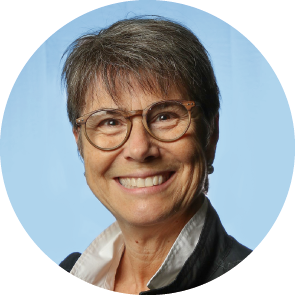
Technologies are changing the face of medicine. In my specialty of diabetes care, continuous glucose monitoring, decision-assisting apps and hybrid closed-loop insulin delivery systems have been introduced for people living with type 1 diabetes and are now being used by people living with other forms of diabetes as part of their treatment. The role of technology in diabetes is evolving rapidly, with new hardware, concepts and terminology around glucose control being introduced at a rapid pace. These technologies require multidisciplinary teams to support those living with diabetes.
Education and training of medical students and doctors on these new technologies and concepts is crucial. The time allotted for diabetes training in many medical curricula has remained constant as this brave new world of technology has been introduced. Many of us who teach these courses feel that simply introducing the available technologies does not do justice to the new treatment tools. We need teaching tools and techniques that help students see the new face of diabetes and understand why concepts such as ‘time in range’ are often more relevant than hemoglobin A1c. Simply showing students new hardware will not necessarily help them, as these technologies will probably already be obsolete by the time they graduate.
The answer to this challenge may well lie with patients. Introducing students to the lives of those affected by the disease can illustrate the impact of technology on daily life. Those who use these technologies can introduce their benefits and undesired aspects, leading to more effective learning. Sharing the experiences of people living with disease should be an effective way to make a long-lasting impression on our young students. During the COVID-19 pandemic in-person teaching stopped and students missed out on direct interactions that could illustrate lived experiences. However, creative virtual solutions also emerged during the pandemic, and these are now available for medical education and are almost as valuable as in-person teaching for bringing the voices of those living with disease to students.
Many medical schools already work with patient experts in teaching, particularly for diseases where clinical signs and symptoms are essential for diagnosis and where patients can more clearly illustrate them to students than any picture could. The role of patients in medical education is increasingly recognized — for example, through the ‘Where’s the Patient’s Voice in Health’ conference.
As well as patients, other members of the multidisciplinary team, such as diabetes educator nurses, dieticians or psychologists could also have a prime role in teaching medical students about the role of technology. These health professionals can teach students how new technologies work and illustrate metrics that matter to clinicians and to the people using the technologies. This will illustrate how technologies impact the daily lives of people living with diabetes, such as how they sleep with hybrid closed loop systems, how they handle these technologies during exercise, how apps function if the patient is offline, the pros and cons of specific types of hardware (such as comparing a patch pump to a catheter pump), and the use of software features (such as whether alarms should beep or not beep when glucose values are high or whether food apps are useful for vegans).
Bringing members of the team and those living with the technologies to medical courses will also demonstrate to student doctors the need for continuing medical education and how treatment varies from person to person, illustrating the need for personalization of therapeutic approaches. Such a discussion should also include societal, financial and access issues, which will vary depending on location.
Most importantly, this multi-faceted approach to teaching will amplify the voices of the people who live with these technologies and use them daily, whose voices are at least as important in the treatment of the disease as that of the doctor.
Author information
Authors and affiliations.
Department of Endocrinology, UZ Leuven, University of Leuven, Leuven, Belgium
Chantal Mathieu
You can also search for this author in PubMed Google Scholar
Corresponding author
Correspondence to Chantal Mathieu .
Ethics declarations
Competing interests.
C.M. serves or has served on advisory panels for Novo Nordisk, Sanofi, Eli Lilly and Company, Novartis, Boehringer Ingelheim, Roche, Medtronic, Imcyse, Insulet, Biomea Fusion and Vertex, with financial compensation received by KU Leuven. KU Leuven has also received research support from Medtronic, Imcyse, Novo Nordisk, Sanofi and ActoBio Therapeutics. C.M. serves or has served on the speakers bureau for Novo Nordisk, Sanofi, Eli Lilly and Company, Medtronic and Boehringer Ingelheim, with financial compensation received by KU Leuven. C.M. is president of the European Association for the Study of Diabetes .
Rights and permissions
Reprints and permissions
About this article
Cite this article.
Mathieu, C. How medical schools can prepare students for new technologies. Nat Med (2024). https://doi.org/10.1038/s41591-024-03041-3
Download citation
Published : 27 May 2024
DOI : https://doi.org/10.1038/s41591-024-03041-3
Share this article
Anyone you share the following link with will be able to read this content:
Sorry, a shareable link is not currently available for this article.
Provided by the Springer Nature SharedIt content-sharing initiative
Quick links
- Explore articles by subject
- Guide to authors
- Editorial policies
Sign up for the Nature Briefing newsletter — what matters in science, free to your inbox daily.

International Emergency Medicine Education Project
We promote emergency medicine and provide free, reusable education resources for medical students and educators
List of Sections and Chapters
International Emergency Medicine Education Project’s ebook is “iEM for Medical Students/Interns.” It currently consist of 106 chapters written by 133 international contributors. Emergency physicians, residents, interns and the medical students showed amazing interest and worked hard to make this resource available today. This project is an extraordinary collaborative work with all stakeholders.
The Facts of Emergency Medicine
- Emergency Medicine: A unique specialty Will Sanderson, Danny Cuevas, Rob Rogers
- Choosing the Emergency Medicine as a career C. James Holliman
- Thinking like an Emergency Physician Joe Lex
Emergency Medicine Clerkship: Things to Know
- The Importance Of The Emergency Medicine Clerkship Linda Katirji, Farhad Aziz, Rob Rogers
- Medical Professionalism : The Dimensions That All Medical Students Should Know About Amila Punyadasa
- Communication and Interpersonal Interactions Vijay Nagpal and Bret A. Nicks
- Data Gathering Chew Keng Sheng
- Diagnostic Testing in Emergency Medicine Yusuf Ali Altunci
- Creating your action plan Chew Keng Sheng
- Documentation Muneer Al Marzouqi and Qais Abuagla
- Discharge Communications Justin Brooten, Bret Nicks
General Approach to Emergency Patients
- The ABC approach to critically ill Patient Donna Venezia
- Abdominal pain Shaza Karrar
- Altered Mental Status Murat Cetin, Begum Oktem, Mustafa Emin Canakci
- Cardiac arrest Abdel Noureldin and Falak Sayed
- Chest pain Assad Suliman Shujaa
- A Child with fever Jabeen Fayyaz
- Gastrointestinal bleeding Moira Carrol, Gurpreet Mudan, Suzanne Bentley
- Headache Matevz Privsek, Gregor Prosen
- Multiple trauma Pia Jerot, Gregor Prosen
- Poisoning Harajeshwar Kohli and Ziad Kazzi
- Respiratory distress Ebru Unal Akoglu
- Shock Maryam AlBadwawi
Selected Cardiovascular Emergencies
- Abdominal aortic aneurysm Lit Sin Quek
- Acute coronary syndrome Khalid Mohammed Ali, Shirley Ooi
- Acute heart failure Walid Hammad
- Aortic dissection Shanaz Sajeed
- Deep venous thrombosis Elif Dilek Cakal
- Hypertensive emergencies Sadiye Yolcu
- Pulmonary Embolism Elif Dilek Cakal
Selected Endocrine, Electrolyte Emergencies
- Acid-Base Disturbance Lamiess Osman, Qais Abuagla
- Hyperglycaemia Hong Chuen
- Hyperkalemia Waiting for new author
- Hypernatremia Vigor Arva, Gregor Prosen
- Hyponatremia Vigor Arva, Gregor Prosen
- Hypoglycaemia Rok Petrovcic
- Thyroid storm Shabana Walia
Selected Environmental Emergencies
- Burns Rahul Goswami
- Drowning Ana Spehonja
- Heat Illness Abdulaziz Al Mulaik
- Hyperthermia Puneet Sharma
- Hypothermia Waiting for new author
Selected Gastrointestinal Emergencies
- Acute Appendicitis Ozlem Dikme
- Biliary disease Dan O’Brien
- Massive gastrointestinal bleeding Dan O’Brien
- Acute mesenteric ischemia Rabind Anthony Charles
- Perforated viscus Ozlem Dikme
Selected Genitourinary Emergencies
- Ectopic pregnancy Dan O’Brien
- Tubo-Ovarian Abscess Matthew Lisankie, Charlotte Derr, Tomislav Jelic
- Testicular torsion Sujata Kirtikant Sheth
Selected Neurological Emergencies
- Approach to patients with stroke Matevz Privsek and Gregor Prosen
- Acute ischemic stroke Fatih Buyukcam
- Dizziness and Vertigo Sadiye Yolcu
- Intracranial hemorrhage Nur-Ain Nadir and Matthew Smetana
- Seizure Feriyde Caliskan Tur
Selected Pulmonary Emergencies
- Asthma Ayse Ece Akceylan
- COPD Ramin Tabatabai, David Hoffman, Tiffany Abramson
- Pneumonia Mary J O
- Spontaneous Pneumothorax Mahmoud Aljufaili
Selected Psychiatric Emergencies
- Acute psychosis Elizabeth Bassett, Nidal Moukaddam, Veronica Tucci
- Stabilization and Management of the Acutely Agitated or Psychotic Patient Michelle Chan, Nidal Moukaddam, Veronica Tucci
- Medical Clearance-Suicidal thought/ideation Veronica Tucci
Selected Orthopaedic Problems and Injuries
- Back pain Funda Karbek Akarca
- Lower extremity injuries Ayse Ece Akceylan
- Pelvic injuries Sercan Yalcinli
- Spine injuries Ozge Can
- Upper extremity injuries Meltem Songur Kodik
Selected Infectious Problems
- Epiglottitis KuanWin Sen
- Meningitis Alja Pareznik
- Sinusitis Katja Zalman and Gregor Prosen
- Sepsis Emilie J. Calvello Hynes
Selected Toxicologic Problems
- Toxic syndromes Eman Al Mulla + Bader AlQahtani
- Acetaminophen – Waiting for new author
- Cocaine Jesus Daniel Lopez Tapia
- Opioid overdose Aldo E. B. Salinas and Jesus Daniel Lopez Tapia
- Organophosphate and Carbamates Waiting for new author
- Tricyclic antidepressants Waiting for new author
Selected Dermatologic Problems
- Adult rashes Waiting for new author
Selected Eye Problems
- Eye trauma Serpil Yaylaci and Kamil Kayayurt
- Red Eye David Wood
Selected Procedures
- Abscess incision and drainage Waiting for new author
- AED Use Mehmet Ali Aslaner
- Airway Management Waiting for new author
- Arterial Blood Gas Sampling Matija Ambooz and Gregor Prosen
- Arthrocentesis Tanju Tasyurek
- Basics of Bleeding Control Ana Spehonja and Gregor Prosen
- Cardiac Monitoring Stacey Chamberlain
- Gastric Lavage and Activated Charcoal Application Elif Dilek Cakal
- Intravenous line access Keith A Reymond
- Intraosseous (IO) lines/Access Keith A Reymond
- Emergency Delivery David F. Toro, Diana V. Yepes, Ryan H. Holzhauer
- Wound care and Laceration Repair Waiting for new author
- Pericardiocentesis David Wald and Lindsay Davis
- Lumbar Puncture Khuloud Alqaran
- Nasogastric tube placement Sara Nikolic and Gregor Prosen
- Needle and tube thoracostomy Waiting for new author
- Procedural sedation and analgesia Nik Rahman
- Rapid Sequence Intubation Qais Abuagla
- Reduction of common dislocations and fractures Dejvid Ahmetović and Gregor Prosen
- Splinting and casting Joseph Pinero, Timothy Snow, Suzanne Bentley
- Urinary catheter placement Gul Pamucu Gunaydin
Selected Diagnostic Tests
- Arterial and venous blood gases analyses Kemal Gunaydin
- Cerebrospinal fluid analysis Arwa Alburaiki and Rouda Salem Alnuaimi
- Urine analysis Jan Zajc
- Whole blood cell count – CBC Kaja Cankar
Selected Imaging Modalities
- EFAST Ashley Bean, Gregory R. Snead
- POCUS in Patients with Undifferentiated Hypotension Rasha Buhumaid
- BLUE protocol Hong Chuen
- How to read c-spine x-rays Dejvid Ahmetovic and Gregor Prosen
- How to read chest x-rays Ozlem Koksal
- How to read head CT Reza Akhavan and Bita Abbasi
- How to read pelvic x-ray Sara Nikolic and Gregor Prosen
- Common US applications Michael Butterfield, Tomislav Jelic, Charlotte Derr
Selected Emergency Drugs
- Antidotes Hamidreza Reihani, Elham Pishbin
- Drugs for cardiovascular problems Waiting for new author
- Drugs for pain relief Nik Ahmad Shaiffudin Nik Him, Azizul Fadzi
- Paralyzing agents Qais Abuagla
- Sedation agents Waiting for new author
Selected Clinical Rules, Scores, Mnemonics
- Clinical Decision Rules Stacey Chamberlain
- Mnemonics Ozlem Dikme
- Classifications and Scores Sarah Attwa and Marwan Galal
Quizzes (Under Construction)
- Quiz 1: BLS, PALS, ACLS Abdel Noureldin
- Quiz 2: Cardiovascular emergencies Abdel Noureldin
- Quiz 3: Respiratory emergencies Abdel Noureldin
- Quiz 4: Gastrointestinal emergencies Aya Dodin, Fakheya
- Quiz 5: Neurologic emergencies Abdel Noureldin
- Quiz 6: Orthopedic emergencies Hind Al Dhaheri
- Quiz 7: Paediatric emergencies Abdel Noureldin
- Quiz 8: Dermatologic emergencies Maryam Darwish, Khulood AlQaraan , Eman AlMulla
- Quiz 9: Trauma emergencies and ATLS Maryam Darwish, Eisa AlKaabi , Eman AlMulla
- Quiz 10: Toxicological emergencies Abdel Noureldin
- Quiz 11: Procedures Khuload Alqaran, Eisa Al Kaabi, Muneer Al Marzouqi
Sharing is caring
- Click to share on Twitter (Opens in new window)
- Click to share on Reddit (Opens in new window)
- Click to share on LinkedIn (Opens in new window)
- Click to share on Facebook (Opens in new window)
- Click to share on Tumblr (Opens in new window)
- Click to share on Pinterest (Opens in new window)
- Click to share on WhatsApp (Opens in new window)
- Click to email a link to a friend (Opens in new window)
- Click to print (Opens in new window)
- Open access
- Published: 05 June 2024
Current status and ongoing needs for the teaching and assessment of clinical reasoning – an international mixed-methods study from the students` and teachers` perspective
- F. L Wagner 1 ,
- M. Sudacka 2 ,
- A. A Kononowicz 3 ,
- M. Elvén 4 , 5 ,
- S. J Durning 6 ,
- I. Hege 7 &
- S. Huwendiek 1
BMC Medical Education volume 24 , Article number: 622 ( 2024 ) Cite this article
Metrics details
Clinical reasoning (CR) is a crucial ability that can prevent errors in patient care. Despite its important role, CR is often not taught explicitly and, even when it is taught, typically not all aspects of this ability are addressed in health professions education. Recent research has shown the need for explicit teaching of CR for both students and teachers. To further develop the teaching and learning of CR we need to improve the understanding of students' and teachers' needs regarding content as well as teaching and assessment methods for a student and trainer CR curriculum.
Parallel mixed-methods design that used web-surveys and semi-structured interviews to gather data from both students (n survey = 100; n interviews = 13) and teachers (n survey = 112; n interviews = 28). The interviews and surveys contained similar questions to allow for triangulation of the results. This study was conducted as part of the EU-funded project DID-ACT ( https://did-act.eu ).
Both the surveys and interview data emphasized the need for content in a clinical reasoning (CR) curriculum such as “gathering, interpreting and synthesizing patient information”, “generating differential diagnoses”, “developing a diagnostic and a treatment plan” and “collaborative and interprofessional aspects of CR”. There was high agreement that case-based learning and simulations are most useful for teaching CR. Clinical and oral examinations were favored for the assessment of CR. The preferred format for a train-the-trainer (TTT)-course was blended learning. There was also some agreement between the survey and interview participants regarding contents of a TTT-course (e.g. teaching and assessment methods for CR). The interviewees placed special importance on interprofessional aspects also for the TTT-course.
Conclusions
We found some consensus on needed content, teaching and assessment methods for a student and TTT-course in CR. Future research could investigate the effects of CR curricula on desired outcomes, such as patient care.
Peer Review reports
Introduction
Clinical reasoning (CR) is a universal ability that mobilizes integration of necessary fundamental knowledge while delivering high-quality patient care in a variety of contexts in a timely and effective way [ 1 , 2 ]. Daniel et al. [ 3 ] define it as a “skill, process or outcome wherein clinicians observe, collect, and interpret data to diagnose and treat patients”. CR encompasses health professionals thinking and acting in patient assessment, diagnostic, and management processes in clinical situations, taking into account the patient ‘s specific circumstances and preferences [ 4 ]. How CR is defined can vary between health professions, but there are also similarities [ 5 ]. Poor CR is associated with low-quality patient care and increases the risk of medical errors [ 6 ]. Berner and Graber [ 7 ] suggested that the rate of diagnostic error is around 15%, underlining the threat that insufficient CR ability poses to patient safety as well as increasing healthcare costs [ 8 ]. Despite the importance of CR, it appears to be rarely taught or assessed explicitly, often only parts of the CR process are covered in existing curricula, and there seems to be a lack of progression throughout curricula (e.g. [ 9 , 10 , 11 , 12 , 13 , 14 ].). Moreover, teachers are often not trained to explicitly teach CR, including explaining their own reasoning to others [ 10 , 11 , 12 ] although this appears to be an important factor in the implementation of a CR curriculum [ 15 ]. Some teachers even question whether CR can be explicitly taught [ 16 ]. Considering these findings, efforts should be made to incorporate explicit teaching of CR into health care professions curricula and training for teachers should be established based on best evidence. However, to date, little is known about what a longitudinal CR curriculum should incorporate to meet the needs of teachers and students.
Insights regarding teaching CR were provided from a global survey by Kononowicz et al. [ 10 ], who reported a need for a longitudinal CR curriculum. However, the participants in their study were mainly health professions educators, leaving the needs of students for a CR curriculum largely unknown. As students are future participants of a CR curriculum, their needs should also be investigated. Kononowicz et al. [ 10 ] also identified a lack of qualified faculty to teach CR. A train-the-trainer course for CR could help reduce this barrier to teaching CR. To the best of our knowledge, in addition to the work by Kononowicz et al. [ 10 ], no research exists yet that addresses the needs of teachers for such a course, and Kononowicz et al. [ 10 ] did not investigate their needs beyond course content. Recently, Gupta et al. [ 12 ] and Gold et al. [ 13 ] conducted needs analyses regarding clinical reasoning instruction from the perspective of course directors at United States medical schools, yet a European perspective is missing. Thus, our research questions were the following:
What aspects of clinical reasoning are currently taught and how important are they in a clinical reasoning curriculum according to teachers and students?
What methods are currently used to teach and assess clinical reasoning and which methods would be ideal according to teachers and students?
In what study year does the teaching of clinical reasoning currently begin and when should it ideally begin according to teachers and students?
How should a train-the-trainer course for teachers of clinical reasoning be constructed regarding content and format?
In this study, we used a convergent parallel mixed-methods design [ 17 ] within a pragmatic constructivist case study approach [ 18 ]. We simultaneously collected data from students and educators using online questionnaires and semi-structured interviews to gain deeper insight into their needs on one particular situation [ 19 ]– the development of a clinical reasoning curriculum—to address our research questions. To help ensure that the results of the survey and the interviews could be compared and integrated, we constructed the questions for the survey and the interviews similarly with the exception that in the interviews, the questions were first asked openly. The design was parallel both in that we collected data simultaneously and also constructed the survey and interviews to cover similar topics. We chose this approach to obtain comprehensive answers to the research questions and to facilitate later triangulation [ 17 ] of the results.
Context of this study
We conducted this study within the EU-funded (Erasmus + program) project DID-ACT (“Developing, implementing, and disseminating an adaptive clinical reasoning curriculum for healthcare students and educators”; https://did-act.eu ). Institutions from six European countries (Augsburg University, Germany; Jagiellonian University in Kraków, Poland; Maribor University, Slovenia; Örebro University, Sweden; University of Bern, Switzerland; EDU, a higher medical education institution based in Malta, Instruct GmbH, Munich, Germany) with the support of associate partners (e.g., Prof. Steven Durning, Uniformed Services University of the Health Sciences, USA; Mälardalen University, Sweden.) were part of this project. For further information, see https://did-act.eu/team-overview/team/ . In this project, we developed an interprofessional longitudinal clinical reasoning curriculum for students in healthcare education and a train-the-trainer course for health profession educators. The current curriculum (for a description of the curriculum, see Hege et al. [ 20 ]) was also informed by this study. This study was part of the Erasmus + Knowledge Alliance DID-ACT (612,454-EPP-1–2019-1-DE-EPPKA2-KA).
Target groups
We identified two relevant target groups for this study, teachers and students, which are potential future users and participants of a train—the—trainer (TTT-) course and a clinical reasoning curriculum, respectively. The teacher group also included individuals who were considered knowledgeable regarding the current status of clinical reasoning teaching and assessment at their institutions (e.g. curriculum managers). These specific participants were individually selected by the DID-ACT project team to help ensure that they had the desired level of expertise. The target groups included different health professions from a large number of countries (see Table 1 ), as we wanted to gather insights that are not restricted to one profession.
Development of data collection instruments
Development of questions.
The questions in this study addressed the current status and needs regarding content, teaching, and assessment of clinical reasoning (CR). They were based on the questions used by Kononowicz et al. [ 10 ] and were expanded to obtain more detailed information. Specifically, regarding CR content, we added additional aspects (see Table 8 in the Appendix for details). The contents covered in this part of the study also align with the five domains of CR education (clinical reasoning concepts, history and physical examination, choosing and interpreting diagnostic tests, problem identification and management and shared decision-making) that were reported by Cooper et al. [ 14 ]. It has been shown that there are similarities between professions regarding the definition of CR (e.g. history taking or an emphasis on clinical skills), while nurses placed greater importance on a patient-centered approach [ 5 ]. We aimed to cover as many aspects of CR in the contents as possible to represent these findings. We expanded the questions on CR teaching formats to cover a broader range of formats. Furthermore, two additional assessment methods were added to the respective questions. Finally, one aspect was added to the content questions for a train-the-trainer course (see Table 8 in the Appendix ). As a lack of qualified faculty to teach CR was identified in the study by Kononowicz et al. [ 10 ], we added additional questions on the specific needs for the design of a CR train-the-trainer course beyond content. Table 8 in the Appendix shows the adaptations that we made in detail.
We discussed the questions within the interprofessional DID-ACT project team and adapted them in several iterative cycles until the final versions of the survey questionnaire and the interview guide were obtained and agreed upon. We tested the pre-final versions with think-alouds [ 21 ] to ensure that the questions were understandable and interpreted as intended, which led to a few changes. The survey questionnaires and interview-guides can be found at https://did-act.eu/results/ and accessed via links in table sections D1.1a (survey questions) and D1.1b (interview guides), respectively. Of these questions, we included only those relevant to the research questions addressed in this study. The questions included in this study can be found in the Appendix in Table8.
Teachers were asked questions about all content areas, but only the expert subgroup was asked to answer questions on the current situation regarding the teaching and assessment of clinical reasoning at their institutions, as they were considered the best informed group on the matter. Furthermore, students were not asked questions on the train-the-trainer course. Using the abovementioned procedures, we also hoped to improve the response rate as longer surveys were found to be associated with lower response rates [ 22 ].
We created two different versions of the interview guide, one for teachers and one for students. The student interview guide did not contain questions on the current status of clinical reasoning teaching and assessment or questions about the train-the-trainer course. The interview guides were prepared with detailed instructions to ensure that the interviews were conducted in a comparable manner at all locations. By using interviews, we intended to obtain a broad picture of existing needs. Individual interviews further allowed participants to speak their own languages and thus to express themselves naturally and as precisely as possible.
Reflexivity statement
Seven researchers representing different perspectives and professions form the study team. MS has been a PhD candidate representing the junior researcher perspective, while also experienced researchers with a broad background in clinical reasoning and qualitative as well as quantitative research are part of the team (SD, SH, AK, IH, ME, FW). ME represents the physiotherapist perspective, SD, SH, and MS represent the medical perspective. We discussed all steps of the study in the team and made joint decisions.
Data collection and analysis
The survey was created using LimeSurvey software (LimeSurvey GmbH). The survey links were distributed via e-mail (individual invitations, posts to institutional mailing lists, newsletters) by the DID-ACT project team and associate partners (the target groups received specific links to the online-survey). The e-mail contained information on the project and its goals. By individually contacting persons in the local language, we hoped to increase the likelihood of participation. The survey was anonymous. The data were collected from March to July 2020.
Potential interview participants were contacted personally by the DID-ACT project team members in their respective countries. We used a convenience sampling approach by personally contacting potential interview partners in the local language to motivate as many participants as possible. With this approach we also hoped to increase the likelihood of participation. The interviews were conducted in the local languages also to avoid language barriers and were audio-recorded to help with the analysis and for documentation purposes. Most interviews were conducted using online meeting services (e.g. Skype or Zoom) because of restrictions due to the ongoing coronavirus pandemic that occurred with the start of data collection at the beginning of the DID-ACT project. The data were collected from March to July 2020. All interview partners provided informed consent.
Ethics approval and consent to participate
We asked the Bern Ethics Committee to approve this multi-institutional study. This type of study was regarded as exempt from formal ethical approval according to the regulations of the Bern Ethics Committee (‘Kantonale Ethikkommission Bern’, decision Req-2020–00074). All participants voluntarily participated and provided informed consent before taking part in this study.
Data analysis
Descriptive analyses were performed using SPSS statistics software (version 28, 2021). Independent samples t-tests were computed for comparisons between teachers and students. When the variances of the two groups were unequal, Welch’s test was used. Bonferroni correction of significance levels was used to counteract alpha error accumulation in repeated tests. The answers to the free text questions were screened for recurring themes. There were very few free-text comments, typically repeating aspects from the closed questions, hence, no meaningful analysis was possible. For this reason, the survey comments are mentioned only where they made a unique contribution to the results.
The interviews were translated into English by the partners. An overarching summarizing qualitative content analysis [ 23 ] of the data was conducted. A summarizing content analysis is particularly useful when the content level of the material is of interest. Its goal is to reduce the material to manageable short texts in a way that retains the essential meaning [ 23 ]. The analysis was conducted first by two of the authors of the study (FW, SH) and then discussed by the entire author team. The analysis was carried out as an iterative process until a complete consensus was reached within the author team.
The results from the surveys and interviews were compared and are presented together in the results section. The qualitative data are reported in accordance with the standards for reporting qualitative research (SRQR, O’Brien et al. [ 24 ]).
Table 1 shows the professional background and country of the interviewees and survey samples. The survey was opened by 857 persons, 212 (25%) of whom answered the questions included in this study. The expert sub-group of teachers who answered the questions on the current status of clinical reasoning teaching and assessment encompassed 45 individuals.
Content of a clinical reasoning curriculum for students
The survey results show that “Gathering, interpreting, and synthesizing patient information”, is currently most extensively taught, while “Theories of clinical reasoning” are rarely taught (see Table 2 ). In accordance with these findings, “Gathering, interpreting, and synthesizing patient information” received the highest mean importance rating for a clinical reasoning curriculum while “Theories of clinical reasoning” received the lowest importance rating. Full results can be found in Table 9 in the Appendix .
Teachers and students differed significantly in their importance ratings of two content areas, “Gathering, interpreting, and synthesizing patient information” ( t (148.32) = 4.294, p < 0.001, d = 0.609) and “Developing a problem formulation/hypothesis” ( t (202) = 4.006, p < 0.001, d = 0.561), with teachers assigning greater importance to both of these content areas.
The results from the interviews are in line with those from the survey. Details can be found in Table 12 in the Appendix .
Clinical reasoning teaching methods
The survey participants reported that, most often, case-based learning is currently applied in the teaching of clinical reasoning (CR). This format was also rated as most important for teaching CR (see Table 3 ). Full results can be found in Table 10 in the Appendix .
Teachers and students differed significantly in their importance ratings of Team-based learning ( t (202) = 3.079, p = 0.002, d = 0.431), with teachers assigning greater importance to this teaching format.
Overall, the interviewees provided very similar judgements to the survey participants. Next to the teaching formats shown in Table 3 , some of them would employ blended learning, and clinical teaching formats such as bedside teaching and internships were also mentioned. Details can be found in the Appendix in Table 13. In addition to the importance of each individual teaching format, it was also argued that all of the formats can be useful because they all are meant to reach different objectives and that there is not one single best format for teaching CR.
Start of clinical reasoning teaching in curricula
Most teachers (52.5%) reported that currently, the teaching of clinical reasoning (CR) starts in the first year of study. Most often (46.4%) the participants also chose the first study year as the optimal year for starting the teaching CR. In accordance with the survey results, the interviewees also advocated for an early start of the teaching of CR. Some interview participants who advocated for a later start of CR teaching suggested that the students first need a solid knowledge base and that once the clinical/practical education starts, explicit teaching of CR should begin.
Assessment of clinical reasoning
The survey results suggest that currently written tests or clinical examinations are most often used, while Virtual Patients are used least often (see Table 4 ). Despite written tests being the most common current assessment format, they received the lowest importance rating for a future longitudinal CR curriculum. Full results can be found in Table 11 in the Appendix .
Teachers and students differed significantly in their importance ratings of clinical examinations ( t (161.81) = 2.854, p = 0.005, d = 0.413) and workplace-based assessments ( t (185) = 2.640, p = 0.009, d = 0.386) with teachers assigning greater importance to both of these assessment formats.
The interviewees also placed importance on all assessment methods but found it difficult to assess CR with written assessment methods. The students seemed to associate clinical examinations more with practical skills than with CR. Details can be found in the Appendix in Table 14. Two of the interview participants mentioned that CR is currently not assessed at their institutions, and one person mentioned that students are asked to self-reflect on their interactions with patients and on potential improvements.
Train-the-trainer course
The following sections highlight the results from the needs analysis regarding a train-the-trainer (TTT-) course. The questions presented here were posed only to the teachers.
Most survey participants reported that there is currently no TTT- course on clinical reasoning at their institution but that they think such a course is necessary (see Table 5 ). The same was also true for the interviewees (no TTT- course on clinical reasoning existing but need for one).
In the interviews, 22 participants (78.6%) answered that a TTT-course is necessary for healthcare educators, two participants answered that no such course was necessary, and two other participants were undecided about its necessity. At none of the institutions represented by the interviewees, a TTT-course for teaching clinical reasoning exists.
When asked what the best format for a clinical reasoning TTT- course would be (single answer question), the majority of the survey participants favored a blended learning / flipped classroom approach, a combination of e-learning and face-to-face meetings. (see Table 6 ).
In the survey comments it was noted that blended-learning encompasses the benefits of both self-directed learning and discussion/learning from others. It would further allow teachers to gather knowledge about CR first in an online learning phase where they can take the time they need before coming to a face-to-face meeting.
The interviewees also found a blended-learning approach particularly suitable for a TTT-course. An e-learning course only was seen as more critical because teachers may lack motivation to participate in an online-only setting, while a one-time face-to-face meeting would not provide enough time. In some interviews, it was emphasized that teachers should experience themselves what they are supposed to teach to the students and also that the trainers for the teachers need to have solid education and knowledge on clinical reasoning.
Table 7 shows the importance ratings of potential content of a TTT-course generated from the survey. To elaborate on this content, comments by the interviewees were added. On average, all content was seen as (somewhat) important with teaching methods on the ward and/or clinic receiving the highest ratings. Some interviewees also mentioned the importance of interprofessional aspects and interdisciplinary understanding of CR. In the survey comments, some participants further expressed their interest in such a course.
Finally, the interviewees were asked about the ideal length of a clinical reasoning TTT-course. The answers varied greatly from 2–3 hours to a two-year educational program, with a tendency toward 1–2 days. Several interviewees commented that the time teachers are able to spend on a TTT-course is limited. This should be considered in the planning of such a course to make participation feasible for teachers.
In this study, we investigated the current status of and suggestions for teaching and assessment of clinical reasoning (CR) in a longitudinal curriculum as well as suggestions for a train-the-trainer (TTT-) course for CR. Teachers and students were invited to participate in online-surveys as well as semi-structured interviews to derive answers to our research questions. Regarding the contents of a CR curriculum for students, the results of the surveys and interviews were comparable and favoured content such as gathering, interpreting, and synthesizing patient information, generating differential diagnoses, and developing a diagnostic and a treatment plan. In the interviews, high importance was additionally placed on collaborative and interprofessional aspects of CR. Case-based learning and simulations were seen as the most useful methods for teaching CR, and clinical and oral examinations were favoured for the assessment of CR. The preferred format for a TTT-course was blended learning. In terms of course content, teaching and assessment methods for CR were emphasized. In addition to research from the North American region [ 11 ], this study provides results from predominantly European countries that support the existing findings.
Content of a clinical reasoning curriculum
Our results revealed that there are still aspects of clinical reasoning (CR), such as “Errors in the clinical reasoning process and strategies to avoid them” or “Interprofessional aspects of CR” that are rarely taught despite their high importance, corroborating the findings of Kononowicz et al. [ 10 ]. According to the interviewees, students should have basic knowledge of CR before they are taught about errors in the CR process and strategies to avoid them. The lack of teaching of errors in CR may also stem from a lack of institutional culture regarding how to manage failures in a constructive way (e.g. [ 16 , 25 ]), making it difficult to explicitly address errors and strategies to avoid them. Although highly relevant in the everyday practice of healthcare professions and underpinned by CR theoretical frameworks (e.g., distributed cognition [ 26 ]), interprofessional and collaborative aspects of CR are currently rarely considered in the teaching of CR. The interviews suggested that hierarchical distance and cultural barriers may contribute to this finding. Sudacka et al. [ 16 ] also reported cultural barriers as one reason for a lack of CR teaching. Generally, the interviewees seemed to place greater importance on interprofessional and collaborative aspects than did the survey-participants This may have been due to differences in the professions represented in the two modalities (e.g., a greater percentage of nurses among the interview participants, who tend to define CR more broadly than physicians [ 5 ]).
“Self-reflection on clinical reasoning performance and strategies for future improvement”, “Developing a problem formulation/hypothesis” and “Aspects of patient-participation in CR” were rated as important but are currently rarely taught, a finding not previously reported. The aspect “Self-reflection on clinical reasoning performance and strategies for future improvement”, received high importance ratings, but only 25% of the survey-participants answered that it is currently taught to a great extent. The interviewees agreed that self-reflection is important and added that ideally, it should be guided by specific questions. Ogdie et al. [ 27 ] found that reflective writing exercises helped students identify errors in their reasoning and biases that contributed to these errors.
“Gathering, interpreting, and synthesizing patient information” and “Developing a problem formulation/hypothesis” were rated significantly more important by teachers than by students. It appears that students may be less aware yet of the importance of gathering, interpreting, and synthesizing patient information in the clinical reasoning process. There was some indication in the interviews that the students may not have had enough experience yet with “Developing a problem formulation/hypothesis” or associate this aspect with research, possibly contributing to the observed difference.
Overall, our results on the contents of a CR curriculum suggest that all content is important and should be included in a CR curriculum, starting with basic theoretical knowledge and data gathering to more advanced aspects such as errors in CR and collaboration. Two other recent surveys conducted in the United States among pre-clerkship clinical skills course directors [ 12 ] and members of clerkship organizations [ 13 ] came to similar conclusions regarding the inclusion of clinical reasoning content at various stages of medical curricula. How to fit the content into already dense study programs, however, can still be a challenge [ 16 ].
In addition to case-based learning and clinical teaching, human simulated patients and Team-based learning also received high importance ratings for teaching clinical reasoning (CR), a finding not previously reported. Lectures, on the other hand, are seen as the least important to teach CR (see also Kononowicz et al. [ 10 ]), as they mainly deliver factual knowledge according to the interviewees. High-fidelity simulations (mannequins) and Virtual Patients (VPs) are rarely used to teach CR at the moment and are rated less important compared to other teaching formats. Some interviewees see high-fidelity simulations as more useful for teaching practical skills. The lower importance rating of VPs was surprising given that this format is case-based, provides a safe environment for learning, and is described in the literature as a well-suited tool for teaching CR [ 28 , 29 ]. Considering that VPs seemed to be used less often at the institutions involved in this study, the lack of experience with this format may have led to this result.
Teachers rated Team-based learning as significantly more important for teaching clinical reasoning than students. In the interviews, many students seemed not to be familiar with Team-based learning, possibly explaining the lower ratings the students gave this format in the survey.
Taken together, our results suggest that there is not one best format for teaching all aspects of clinical reasoning but rather that the use of all teaching formats is justified depending on the specific content to be taught and goals to be achieved. However, there was agreement that a safe learning environment where no patients can be harmed is preferred for teaching clinical reasoning, and that discussions should be possible.
There was wide agreement that clinical reasoning (CR) teaching should start in the first year of study in the curriculum. However, a few participants of this study argued that students first need to develop some general knowledge before CR is taught. Rencic et al. [ 11 ] reported that according to internal medicine clerkship directors, CR should be taught throughout all years of medical school, with a particular focus during the clinical teaching years. A similar remark was made by participants in a survey among pre-clerkship clinical skills course directors by Gupta et al. [ 12 ] where the current structure of some curricula (e.g. late introduction of the pathophysiology) was regarded as a barrier to introducing CR from the first year of study on [ 12 ].
Our results show that the most important format for assessing clinical reasoning (CR) that is also currently used to the greatest extent are clinical examinations (e.g. OSCE), consistent with Kononowicz et al. [ 10 ]. The interviewees emphasized that CR should ideally be assessed in a conversation or discussion where the learners can explain their reasoning. Given this argument, all assessment formats enabling a conversation are suitable for assessing CR. This is reflected in our survey results, where assessment formats that allow for a discussion with the learner received the most favourable importance ratings, including oral examinations. In agreement with Kononowicz et al. [ 10 ], we also found that written tests are currently used most often to assess CR but are rated as least important and suitable only for the assessment of some aspects of CR. Daniel et al. [ 3 ] argued that written exams such as MCQs, where correct answers have to be selected from a list of choices, are not the best representation of real practical CR ability. Thus, there still seems to be potential for improvement in the way CR is assessed.
Teachers rated clinical examinations and workplace-based assessments significantly higher than students. Based on the interviews, the students seemed to associate clinical examinations such as OSCEs more with a focus on practical skills than CR, potentially explaining their lower ratings of this format.
What a clinical reasoning train-the-trainer course should look like
Our results show a clear need for a clinical reasoning (CR) train-the-trainer course (see also Singh et al. [ 15 ]), which currently does not exist at most institutions represented in this study, corroborating findings by Kononowicz et al. [ 10 ]. A lack of adequately trained teachers is a common barrier to the introduction of CR content into curricula [ 12 , 16 ]. According to our results such a course should follow a blended learning/flipped classroom approach or consist of a series of face-to-face meetings. A blended-learning course would combine the benefits of both self-directed learning and the possibility for trainers to discuss with and learn from their peers, which could also increase their motivation to participate in such a course. An e-learning only course or a one-time face-to-face meeting were considered insufficient. The contents “Clinical reasoning strategies” and “Common errors in the clinical reasoning process” were given greater importance for the trainer-curriculum than for the students-curriculum, possibly reflecting higher expectations of trainers as “CR experts” compared with students. There was some agreement in the interviews that ideally, the course should not be too time-consuming, with participants tending towards an overall duration of 1–2 days, considering that most teachers usually have many duties and may not be able or willing to attend the course if it were too long. Lack of time was also identified as a barrier to attending teacher training [ 12 , 13 , 16 ].
Strengths and limitations
The strengths of this study include its international and interprofessional participants. Furthermore, we explicitly included teachers and students as target groups in the same study, which enables a comparison of different perspectives. Members of the target groups not only participated in a survey but were also interviewed to gain in-depth knowledge. A distinct strength of this study is its mixed-methods design. The two data collection methods employed in parallel provided convergent results, with responses from the web survey indicating global needs and semi-structured interviews contributing to a deeper understanding of the stakeholder groups’ nuanced expectations and perspectives on CR education.
This study is limited in that most answers came from physicians, making the results potentially less generalizable to other professions. Furthermore, there were participants from a great variety of countries, with some countries overrepresented. Because of the way the survey-invitations were distributed, the exact number of recipients is unknown, making it impossible to compute an exact response rate. Also, the response rate of the survey was rather low for individuals who opened the survey. Because the survey was anonymous, it cannot completely be ruled out that some individuals participated in both interviews and survey. Finally, there could have been some language issues in the interview analysis, as the data were translated to English at the local partner institutions before they were submitted for further analysis.
Our study provides evidence of an existing need for explicit clinical reasoning (CR) longitudinal teaching and dedicated CR teacher training. More specifically, there are aspects of CR that are rarely taught that our participants believe should be given priority, such as self-reflection on clinical reasoning performance and strategies for future improvement and aspects of patient participation in CR that have not been previously reported. Case-based learning and clinical teaching methods were again identified as the most important formats for teaching CR, while lectures were considered relevant only for certain aspects of CR. To assess CR, students should have to explain their reasoning, and assessment formats should be chosen accordingly. There was also still a clear need for a CR train-the-trainer course. In addition to existing research, our results show that such a course should ideally have a blended-learning format and should not be too time-consuming. The most important contents of the train-the-trainer course were confirmed to be teaching methods, CR strategies, and strategies to avoid errors in the CR process. Examples exist for what a longitudinal CR curriculum for students and a corresponding train-the-trainer course could look like and how these components could be integrated into existing curricula (e.g. DID-ACT curriculum [ 20 ], https://did-act.eu/integration-guide/ or the described curriculum of Singh et al. [ 15 ]). Further research should focus on whether and to what extent the intended outcomes of such a curriculum are actually reached, including the potential impact on patient care.
Availability of data and materials
All materials described in this manuscript generated during the current study are available from the corresponding author on reasonable request without breaching participant confidentiality.
Connor DM, Durning SJ, Rencic JJ. Clinical reasoning as a core competency. Acad Med. 2020;95:1166–71.
Article Google Scholar
Young M, Szulewski A, Anderson R, Gomez-Garibello C, Thoma B, Monteiro S. Clinical reasoning in CanMEDS 2025. Can Med Educ J. 2023;14:58–62.
Google Scholar
Daniel M, Rencic J, Durning SJ, Holmboe E, Santen SA, Lang V, Gruppen LD. Clinical reasoning assessment methods: a scoping review and practical guidance. Acad Med. 2019;94:902–12.
Scott IA. Errors in clinical reasoning: causes and remedial strategies. BMJ. 2009. https://doi.org/10.1136/bmj.b1860 .
Huesmann L, Sudacka M, Durning SJ, Georg C, Huwendiek S, Kononowicz AA, Schlegel C, Hege I. Clinical reasoning: what do nurses, physicians, and students reason about. J Interprof Care. 2023;37:990–8.
Norman GR, Eva KW. Diagnostic error and clinical reasoning. Med Educ. 2010;44:94–100.
Berner E, Graber M. Overconfidence as a cause of diagnostic error in medicine. Am J Med. 2008;121:2–23.
Cooper N, Da Silva AL, Powell S. Teaching clinical reasoning. In: Cooper N, Frain J, editors. ABC of clinical reasoning. 1st ed. Hoboken, NJ: John Wiley & Sons Ltd; 2016. p. 44–50.
Elvén M, Welin E, Wiegleb Edström D, Petreski T, Szopa M, Durning SJ, Edelbring S. Clinical reasoning curricula in health professions education: a scoping review. J Med Educ Curric Dev. 2023. https://doi.org/10.1177/23821205231209093 .
Kononowicz AA, Hege I, Edelbring S, Sobocan M, Huwendiek S, Durning SJ. The need for longitudinal clinical reasoning teaching and assessment: results of an international survey. Med Teach. 2020;42:457–62.
Rencic J, Trowbridge RL, Fagan M, Szauter K, Durning SJ. Clinical reasoning education at US medical schools: results from a national survey of internal medicine clerkship directors. J Gen Intern Med. 2017;32:1242–6.
Gupta S, Jackson JM, Appel JL, Ovitsh RK, Oza SK, Pinto-Powell R, Chow CJ, Roussel D. Perspectives on the current state of pre-clerkship clinical reasoning instruction in United States medical schools: a survey of clinical skills course directors. Diagnosis. 2021;9:59–68.
Gold JG, Knight CL, Christner JG, Mooney CE, Manthey DE, Lang VJ. Clinical reasoning education in the clerkship years: a cross-disciplinary national needs assessment. PLoS One. 2022;17:e0273250.
Cooper N, Bartlett M, Gay S, Hammond A, Lillicrap M, Matthan J, Singh M. UK Clinical Reasoning in Medical Education (CReME) consensus statement group. Consensus statement on the content of clinical reasoning curricula in undergraduate medical education. Med Teach. 2021;43:152–9.
Singh M, Collins L, Farrington R, Jones M, Thampy H, Watson P, Grundy J. From principles to practice: embedding clinical reasoning as a longitudinal curriculum theme in a medical school programme. Diagnosis. 2021;9:184–94.
Sudacka M, Adler M, Durning SJ, Edelbring S, Frankowska A, Hartmann D, Hege I, Huwendiek S, Sobočan M, Thiessen N, Wagner FL, Kononowicz AA. Why is it so difficult to implement a longitudinal clinical reasoning curriculum? A multicenter interview study on the barriers perceived by European health professions educators. BMC Med Educ. 2021. https://doi.org/10.1186/s12909-021-02960-w .
Hingley A, Kavaliova A, Montgomery J, O’Barr G. Mixed methods designs. In: Creswell JW, editor. Educational research: planning, conducting, and evaluating quantitative and qualitative research. 4th ed. Boston: Pearson; 2012. p. 534–75.
Merriam SB. Qualitative research and case study applications in education. In: from" case study research in education.". Sansome St. Revised and Expanded. San Francisco, CA: Jossey-Bass Publishers; 1998.
Cleland J, MacLeod A, Ellaway RH. The curious case of case study research. Med Educ. 2021;55:1131–41.
Hege I, Adler M, Donath D, Durning SJ, Edelbring S, Elvén M, Wiegleb Edström D. Developing a European longitudinal and interprofessional curriculum for clinical reasoning. Diagnosis. 2023;10:218–24.
Collins D. Pretesting survey instruments: an overview of cognitive methods. Qual Life Res. 2003;12:229–38.
Liu M, Wronski L. Examining completion rates in web surveys via over 25,000 real-world surveys. Soc Sci Comput Rev. 2018;36:116–24.
Mayring P, Fenzl T. Qualitative inhaltsanalyse. In: Baur N, Blasius J, editors. Handbuch methoden der empirischen Sozialforschung. Wiesbaden: Springer VS; 2019. p. 633–48.
Chapter Google Scholar
O’Brien BC, Harris IB, Beckman TJ, Reed DA, Cook DA. Standards for reporting qualitative research: a synthesis of recommendations. Acad Med. 2014;89:1245–51.
Edmondson AC. Learning from failure in health care: frequent opportunities, pervasive barriers. BMJ Qual Saf. 2004;13 Suppl 2:ii3-ii9.
Merkebu J, Battistone M, McMains K, McOwen K, Witkop C, Konopasky A, Durning SJ. Situativity: a family of social cognitive theories for understanding clinical reasoning and diagnostic error. Diagnosis. 2020;7:169–76.
Ogdie AR, Reilly JB, Pang WG, Keddem S, Barg FK, Von Feldt JM, Myers JS. Seen through their eyes: residents’ reflections on the cognitive and contextual components of diagnostic errors in medicine. Acad Med. 2012;87:1361–7.
Berman NB, Durning SJ, Fischer MR, Huwendiek S, Triola MM. The role for virtual patients in the future of medical education. Acad Med. 2016;91:1217–22.
Plackett R, Kassianos AP, Mylan S, Kambouri M, Raine R, Sheringham J. The effectiveness of using virtual patient educational tools to improve medical students’ clinical reasoning skills: a systematic review. BMC Med Educ. 2022. https://doi.org/10.1186/s12909-022-03410-x .
Download references
Acknowledgements
We want to thank all participants of the interviews and survey who took their time to contribute to this study despite the ongoing pandemic in 2020. Furthermore, we thank the members of the DID-ACT project team who supported collection and analysis of survey and interview data.
The views expressed herein are those of the authors and not necessarily those of the Department of Defense, the Uniformed Services University or other Federal Agencies.
This study was partially supported by the Erasmus + Knowledge Alliance DID-ACT (612454-EPP-1–2019-1-DE-EPPKA2-KA).
Author information
Authors and affiliations.
Institute for Medical Education, Department for Assessment and Evaluation, University of Bern, Bern, Switzerland
F. L Wagner & S. Huwendiek
Center of Innovative Medical Education, Department of Medical Education, Jagiellonian University, Kraków, Poland
Faculty of Medicine, Department of Bioinformatics and Telemedicine, Jagiellonian University, Kraków, Poland
A. A Kononowicz
School of Health, Care and Social Welfare, Mälardalen University, Västerås, Sweden
Faculty of Medicine and Health, School of Health Sciences, Örebro University, Örebro, Sweden
Uniformed Services University of the Health Sciences, Bethesda, MD, USA
S. J Durning
Institute of Medical Education, University Hospital, LMU Munich, Munich, Germany
You can also search for this author in PubMed Google Scholar
Contributions
FW and SH wrote the first draft of the manuscript. All authors critically revised the manu-script in several rounds and approved the final manuscript.
Corresponding author
Correspondence to F. L Wagner .
Ethics declarations
This type of study was regarded as exempt from formal ethical approval according to the regulations of the Bern Ethics Committee (‘Kantonale Ethikkommission Bern’, decision Req-2020–00074). All participants voluntarily participated and provided informed consent before taking part in this study.
Consent for publication
All authors consent to publication of this manuscript.
Competing interests
The authors declare no competing interests.
Additional information
Publisher’s note.
Springer Nature remains neutral with regard to jurisdictional claims in published maps and institutional affiliations.
Rights and permissions
Open Access This article is licensed under a Creative Commons Attribution 4.0 International License, which permits use, sharing, adaptation, distribution and reproduction in any medium or format, as long as you give appropriate credit to the original author(s) and the source, provide a link to the Creative Commons licence, and indicate if changes were made. The images or other third party material in this article are included in the article's Creative Commons licence, unless indicated otherwise in a credit line to the material. If material is not included in the article's Creative Commons licence and your intended use is not permitted by statutory regulation or exceeds the permitted use, you will need to obtain permission directly from the copyright holder. To view a copy of this licence, visit http://creativecommons.org/licenses/by/4.0/ . The Creative Commons Public Domain Dedication waiver ( http://creativecommons.org/publicdomain/zero/1.0/ ) applies to the data made available in this article, unless otherwise stated in a credit line to the data.
Reprints and permissions
About this article
Cite this article.
Wagner, F., Sudacka, M., Kononowicz, A. et al. Current status and ongoing needs for the teaching and assessment of clinical reasoning – an international mixed-methods study from the students` and teachers` perspective. BMC Med Educ 24 , 622 (2024). https://doi.org/10.1186/s12909-024-05518-8
Download citation
Received : 16 January 2024
Accepted : 06 May 2024
Published : 05 June 2024
DOI : https://doi.org/10.1186/s12909-024-05518-8
Share this article
Anyone you share the following link with will be able to read this content:
Sorry, a shareable link is not currently available for this article.
Provided by the Springer Nature SharedIt content-sharing initiative
- Clinical reasoning
BMC Medical Education
ISSN: 1472-6920
- Submission enquiries: [email protected]
- General enquiries: [email protected]

- Campus News /
2024 Research & Scholarship Forum Showcases Pharmacist’s Role in Interprofessional Healthcare Team
May 13, 2024
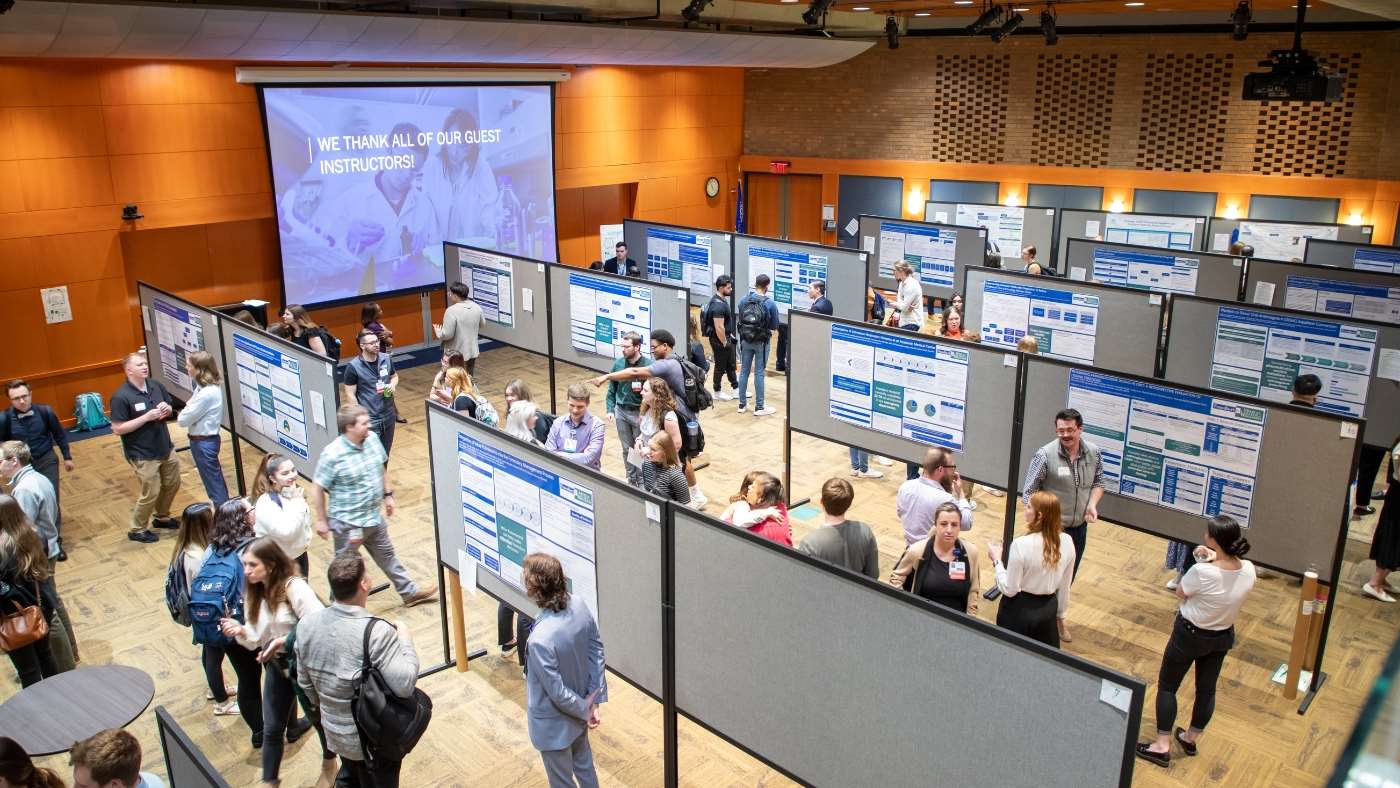
The MCW School of Pharmacy’s 2024 Research & Scholarship Forum exhibited the work of students, residents, fellows, preceptors, faculty, staff and affiliated partners. The poster showcase featured the findings of 42 projects, which aimed to improve patient care and medication outcomes.
“Providing a research and scholarship forum allows participants to learn about the evolving role of pharmacists, particularly in an interprofessional environment, to discover advancements in the pharmacy profession, engage in peer reflection and identify opportunities for future collaboration,” said Kristin Busse, PharmD, BCPS , assistant professor in the MCW School of Pharmacy and research oversight program director in the Office of Research.
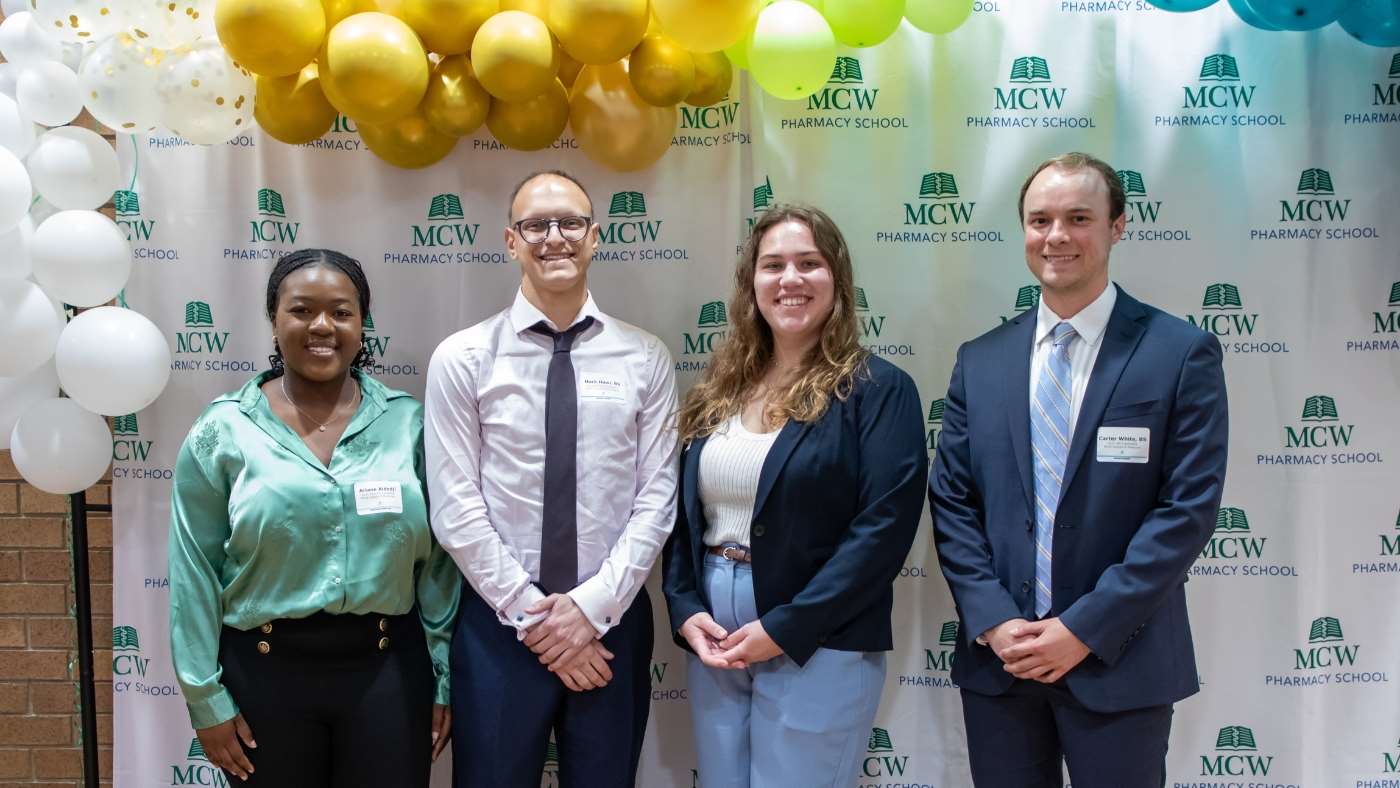
Of the 42 poster presenters, three award winners gave platform presentations. For Best Student Project, lead author Carter White, BS, 2027 MD candidate from the MCW Medical School, presented the project “Release Characteristics of Partial Patch Clonidine Transdermal System for Pediatric Patients.” The other authors include Sophia Schulte, 2025 PharmD candidate, and MCW School of Pharmacy faculty Jesse Cramer, PharmD, and Abhay Chauhan, PhD, MPharm.
“I hope my presentation demonstrated how pharmacy research can directly enhance patient care,” said White. “I was eager to show attendees that some clinical challenges can be met with straightforward, effective solutions.”
For Best Resident Project, lead author Emily VanOtterloo, PharmD, resident pharmacist with Froedtert & the Medical College of Wisconsin, presented the project “Optimal Duration of Home Blood Pressure Monitoring Protocol in Adults with Hypertension.” The other authors include Zachary Hovis, PharmD, BCACP, assistant professor in the MCW School of Pharmacy, Michelle Mack, BBA, of Froedtert & MCW, Ryan Hanson, MS, of Froedtert & MCW and Erin DeJarlais, PT, MBA, DPT, of Inception Health.
“The Digital Care Monitoring Program at Froedtert and the Medical College of Wisconsin demonstrated sustained effectiveness in maintaining blood pressure control three to six months after patients were disenrolled from the program,” said Dr. VanOtterloo. “These findings highlight the potential value of integrating home blood pressure monitoring with digital engagement tools and pharmacist follow-up in hypertension management.”
For Best Abstract Overall, lead author Mark Hawi, BS, research technologist with the MCW School of Pharmacy, presented the project “HPLC Determination of Pharmaceutical Strength of Expired Oral Hypoglycemics Containing Alogliptin, Metformin and Pioglitazone.” The other authors include Anna Little, 2025 PharmD candidate, Carter White, 2027 MD candidate and Ehab Abourashed, PhD, MS, BPharm, professor and assistant dean for academic and curricular affairs with the MCW School of Pharmacy.
Hawi hoped his presentation ignited interest and curiosity about expired medications. “I want to show that the findings of our study have real, practical applications in terms of free clinic physicians using the data collected to aid in their judgment when using expired medications, plus how our study contributes to the advancement of knowledge about expired hypoglycemic formulations,” said Hawi.
The project receiving honorable mention was “A Prescription to Change Enhancing Pharmacy Student Cultural Intelligence” by Ariane Aidedji and Liliana Galvan, both 2025 PharmD candidates, and Lana Minshew, PhD, assistant professor with the MCW School of Pharmacy.
The event also included a Celebration of Teaching and Learning, which recognized the following 2023-2024 instructor and preceptor award winners:
Outstanding Guest Instructor s
- Caitlin Dunn, MHA (Froedtert &MCW)
- Kristin Hanson, MS (Froedtert &MCW)
- Mark Lodes, MD (Froedtert &MCW)
- Taylor Mancuso, PharmD (Froedtert &MCW)
- Chris Viesselmann, PharmD, BCCCP (Froedtert &MCW)
Patient Care Lab
- John Harter, PharmD (Children’s Wisconsin)
- Angela Paul, PharmD, BCPS (ProHealth Care)
- Rodney Ramos (MATC)
- Claire Solofra, PharmD (St. Luke’s)
- Kathryn Wierer, PharmD, BCPPS, BCCPS (Children’s Wisconsin)
Pharmaceutics
- James Cruikshank, PharmD (Froedtert &MCW)
- Brooke Fraser, PharmD (Froedtert &MCW)
Interdisciplinary Colleague of the Year
- Amy Turner, MS – Director of Operations and Innovation, RPRD Diagnostics
- Ashley Derezinski, BS – Clinical Lab Supervisor, RPRD Diagnostics
IPPE Preceptor of the Year
- Michelle Mitchell, PharmD – Pharmacy Manager, Walgreens
APPE Preceptor of the Year
- Steven Finkenbinder, PharmD, AE-C – Internal Medicine Clinical Pharmacy Specialist, Clement J. Zablocki VA Medical Center
Faculty Preceptor of the Year
- Matthew Stanton, PharmD, BCPS, DABAT – Emergency Pharmacist, Froedtert Hospital; Clinical Assistant Professor, MCW School of Pharmacy; Clinical Toxicologist, WI Poison Center
Didactic Instructors of the Year
Biopharmaceutical Sciences Faculty
- Abir El-Alfy, PhD – Assistant Dean for Student Affairs, Professor (Selected by PY1 and PY2 students)
Clinical Sciences Faculty
- Michael DeBisschop, PharmD – Professor (Selected by PY1 students)
- Matthew Stanton, PharmD, BCPS, DABAT – Clinical Assistant Professor (Selected by PY2 students)
Doctor of Education Leadership
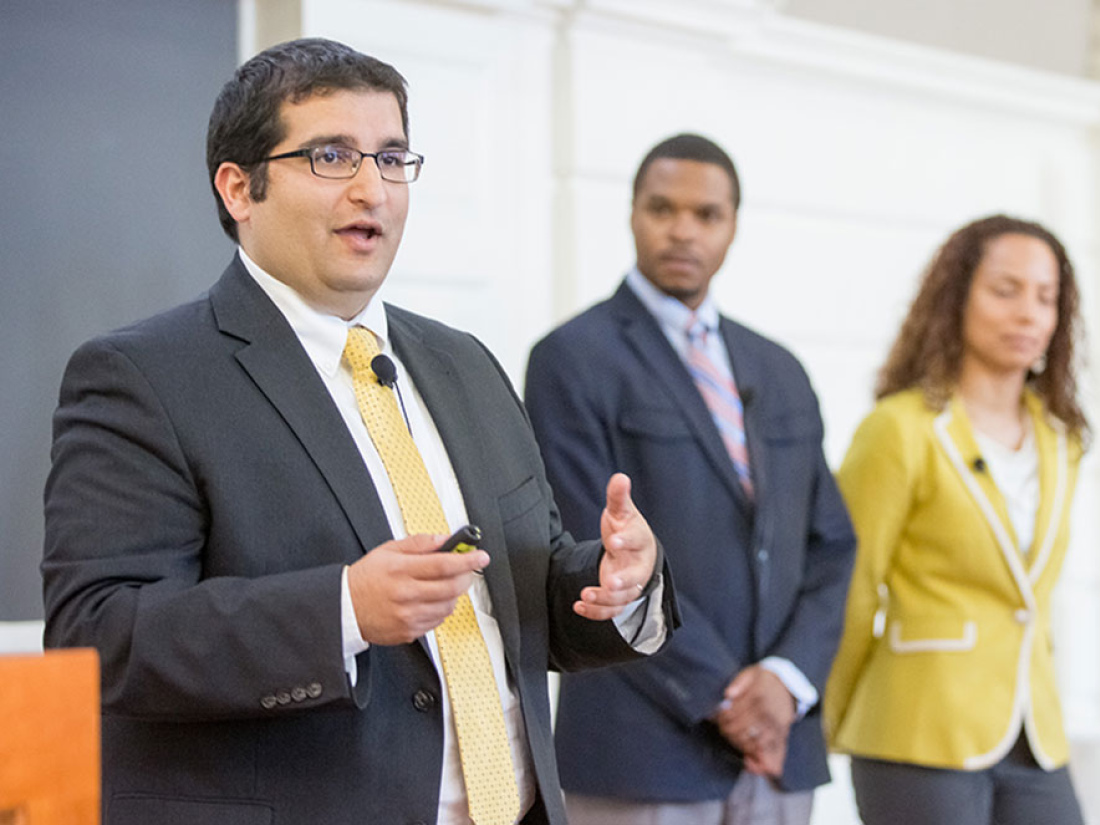
Additional Information
- Download the Doctoral Viewbook
- Admissions & Aid
America needs transformative leaders in preK–12 education whose passion for education quality and equity is matched by a knowledge of learning and development, the organizational management skills to translate visionary ideas into practical success, and a firm grasp of the role of context and politics in shaping leadership. Graduates of the three-year, multidisciplinary Doctor of Education Leadership (Ed.L.D.) Program at the Harvard Graduate School of Education will be prepared to become those leaders.
The Ed.L.D Program — taught by faculty from the Harvard Graduate School of Education, the Harvard Business School, and the Harvard Kennedy School — will train you for system-level leadership positions in school systems, state and federal departments of education, and national nonprofit organizations. Ed.L.D. is a full-time, three-year program built on a cohort learning model. Cohorts consist of up to 25 students from diverse professional backgrounds (including district/charter management leaders, nonprofit directors, principals, teachers, and policy researchers) who progress through the program together.
All Ed.L.D. students receive a full tuition funding package plus stipends, work opportunities, and a paid third-year residency at a partner organization.
The Ed.L.D. Program prepares graduates to do work for the public good in the American public education sector, whether that be at the system or state level. Specifically, the program is designed to accelerate the progress graduates make toward achieving meaningful impact in influential roles and/or crossing boundaries in the following spaces in the public education sector:
- PreK–12 district or CMO leadership roles : superintendent of schools, chief academic officer, and/or deputy superintendent
- Foundation/philanthropy roles: director, president and CEO, senior fellow
- Education nonprofit roles : president or executive director of backbone or collective impact organizations which support preK–12 schools. Ed.L.D. graduates will lead education nonprofits that explicitly focus on improving outcomes and opportunities for children, families, and communities.
- State or federal education leadership roles : commissioner or deputy commissioner roles. Could also include public education advocacy or education policy advisers to senior government officials.
- Social Entrepreneurship and Innovation roles: Founder, CEO, president
Curriculum Information
The Ed.L.D. curriculum is a balance of multidisciplinary coursework and practice-based learning. Core courses and electives are taught by recognized leaders from across Harvard’s graduate programs in fields like data-based education reform, organizational change and innovation, and effective leadership strategies for urban schools. You will develop and test your leadership skills through team projects and an immersive third-year residency.
All students in the cohort take the same classes in four foundational content areas: learning and teaching, leadership and organizational change, politics and policy, adult development, and leadership inside and out (including one-on-one executive coaching). Courses taken during the first-year focus on practice-based learning and serve as the framework of your first-year experience.
Sample HGSE Courses
- Leading Change
- How People Learn
- Ed.L.D. Proseminar
- Leadership, Entrepreneurship, and Learning
- Race, Equity, and Leadership
- Practicing Leadership Inside and Out
- Sector Change
- The Workplace Lab for System-Level Leaders
View all courses in the Academic Catalog.
Each cohort member works with program advisers to choose an individualized sequence of electives from any of the Harvard graduate schools. You will work closely with the program faculty and staff during your second year to determine the best match with a partner organization for your third-year residency. Matches are driven by mutual interest between the resident and the partner organization, and each student's career and learning goals and geographic preferences.
- Second Year Practicing Leadership Inside and Out
- Driving Change
- Education Sector Nonprofits
- Negotiation Workshop
- Coaching with Equity in Mind
- Ethnic Studies and Education
- Deeper Learning for All: Designing a 21st Century School System
- Institutional Change in School Organizations, Systems, and Sectors
You will take part in a 10-month paid residency at one of our partner organizations. There, you will work on a strategic project which synthesizes your experience and learning into a written Capstone project. You will stay connected to your Ed.L.D. cohort and HGSE through technology and by returning to Harvard periodically for intensive workshops.
Paid Residency
Our partner organizations include school systems and departments of education, as well as some of the nation's most influential and dynamic nonprofit, mission-based for-profit, and philanthropic organizations.
You will be intentionally pushed out of your comfort zones and asked to work systemically and make a significant contribution to the partner organization. In addition, the residency will provide you with the professional mentoring, practical experiences, and network of connections they need to position themselves as future leaders in the education sector.
Strategic Project
You will define (with supervisors from your partner organization) a strategic project on which to focus. You will have the opportunity to lead one or two major efforts on behalf of the organization, such as the creation or implementation of current initiatives. The project allows you to practice and improve leadership skills, add important value to the mission and strategy of the partner organization, work systemically, and hold high-level accountability.
During the residency period, you will produce a written Capstone. The Capstone is a descriptive, analytic, and reflective account of your third-year leadership contributions to a strategic project within an Ed.L.D. partner organization. It is a demonstration of your ability to engage others, develop strategy to successfully address and diagnose challenges, work toward a vision and goals, and learn from the results.
Sample Topics
- Accountability, Coherence, and Improvement: Leadership Reflection and Growth in the Los Angeles Unified School District
- Leadership Development for Entrepreneurial Education Leaders Working to Build Public & Private Sector Support
- Disrupting Teacher Preparation: Lessons in Collaboration and Innovation Across the Learning to Teach Community of Practice
- Pursuing Educational Equality for English Language Learners
Sample Summaries
- Breaking Down Silos in a School District: Findings from an Ed.L.D. Project in Montgomery County
- Expanding Students' Access to Meaningful STEM Learning Opportunities Through Strategic Community Partnerships
- Developing a New Teacher Leadership and Compensation System in Iowa: A Consensus-Based Process
- Finding Great Teachers for Blended-Learning Schools
GSE Theses and Dissertations from Digital Access to Scholarship at Harvard (DASH)

Program Faculty
Ed.L.D. students learn with renowned faculty from the Harvard Graduate School of Education, Harvard Business School, and Harvard Kennedy School. Faculty from the three schools share their individual expertise in the Ed.L.D. Program and work collaboratively to provide a challenging and coherent experience for students. Faculty who teach in the Ed.L.D. core curriculum and advise Ed.L.D. students include:
Faculty Director
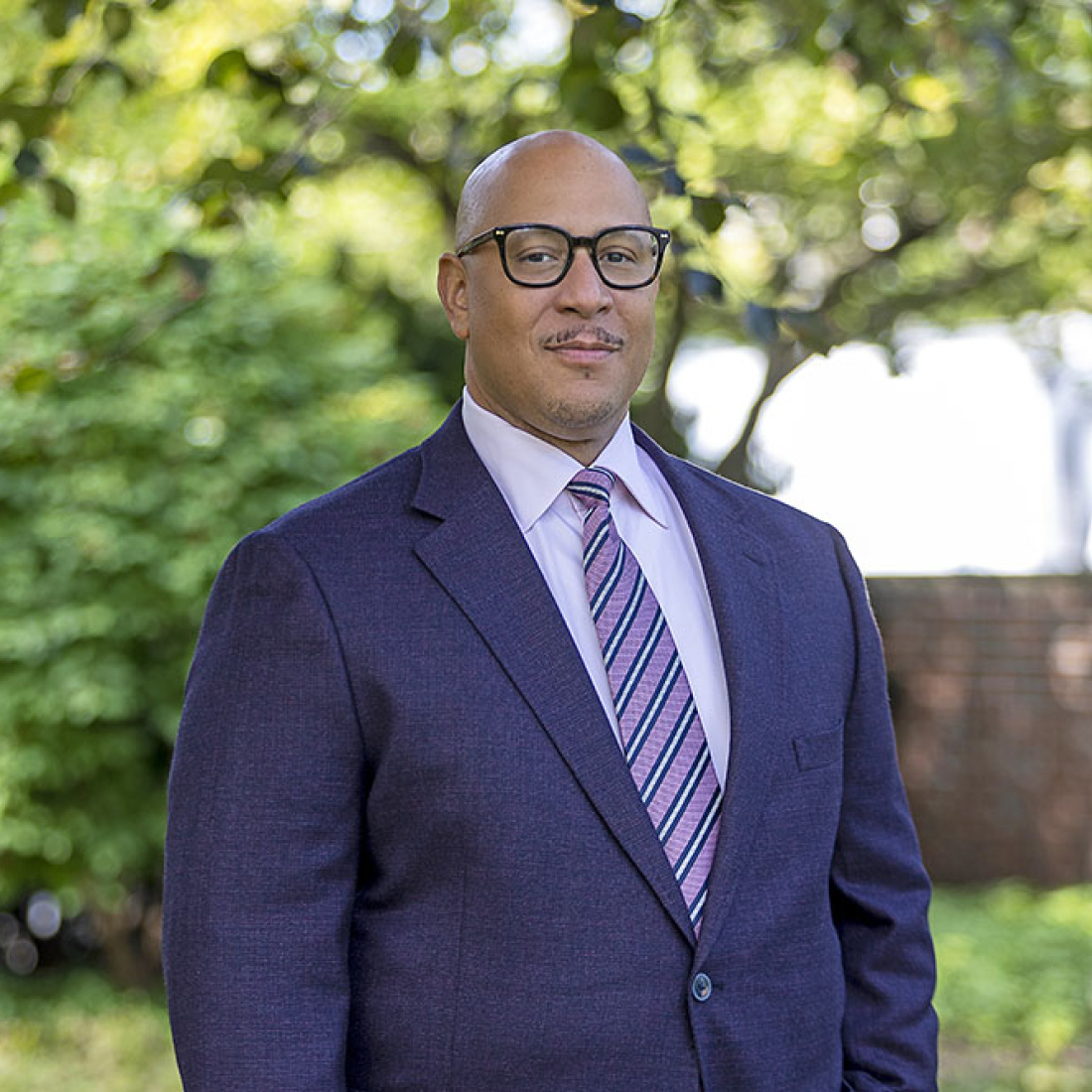
Frank D. Barnes
Frank Barnes is faculty director of the Doctor of Education Leadership Program. He has over 30 years experience as an educator, researcher, and organizer. As a chief accountability officer, he led turnaround efforts for large public school districts, including Boston Public Schools and Charlotte-Mecklenburg Schools.
Kathryn Parker Boudett
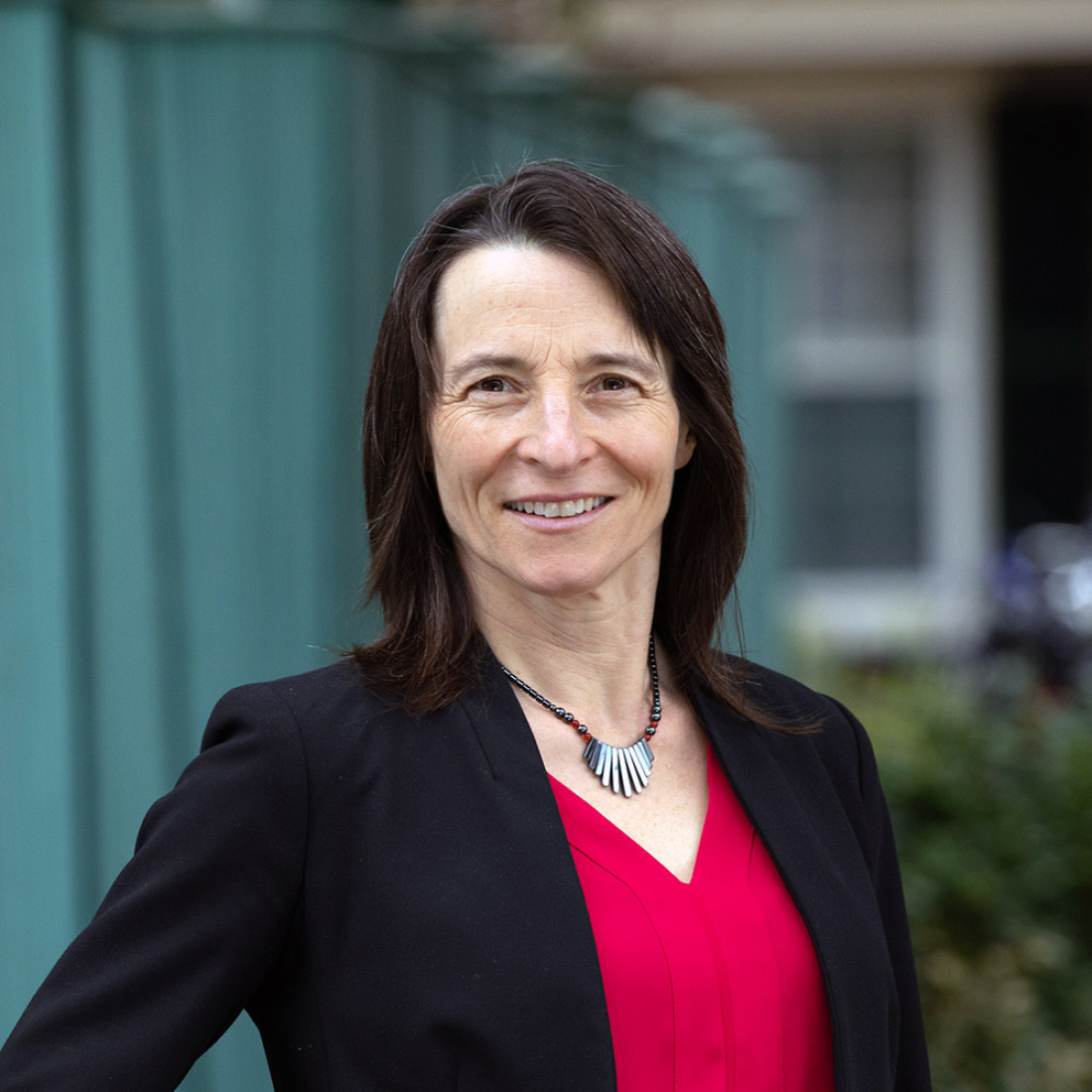
Ebony N. Bridwell-Mitchell
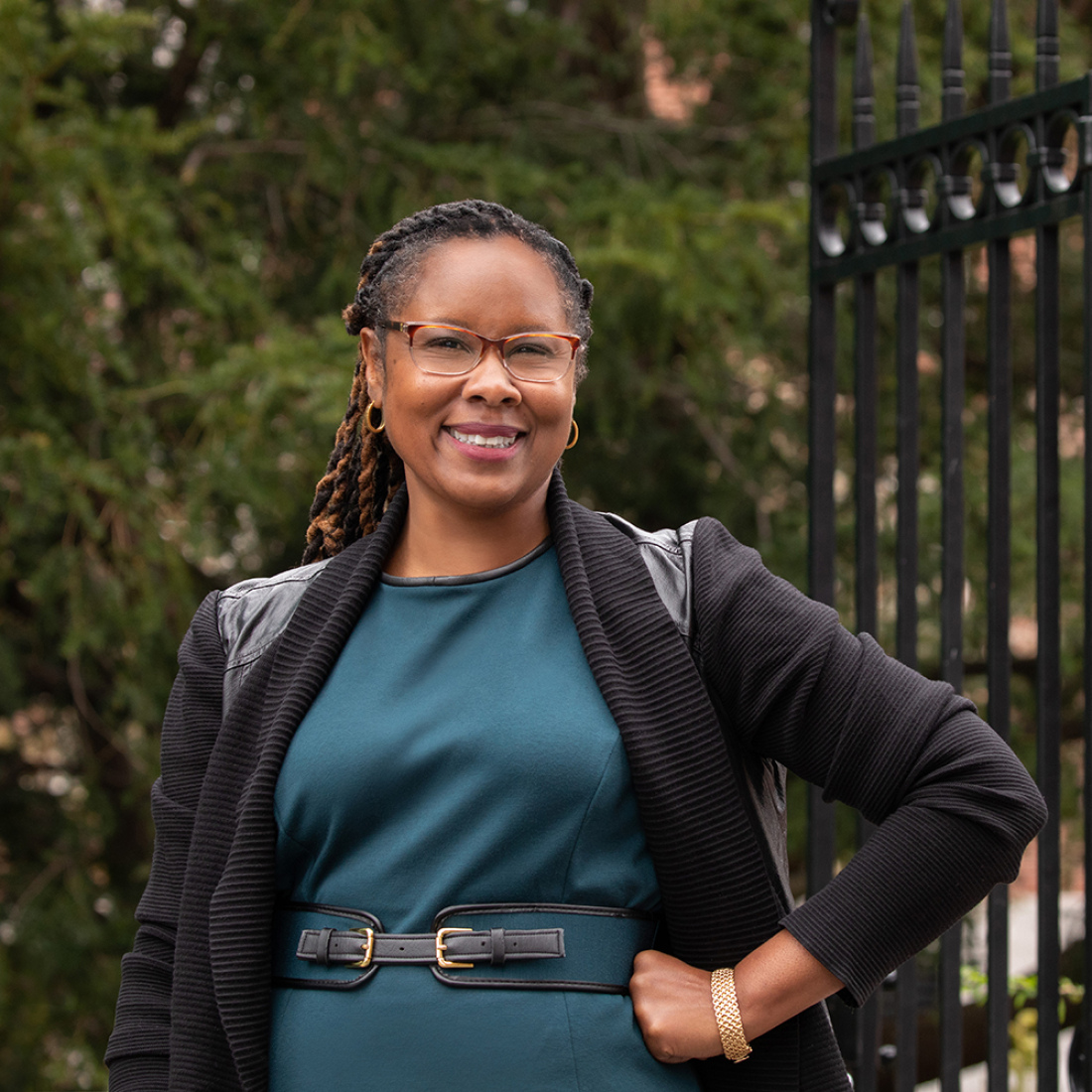
Jennifer Perry Cheatham
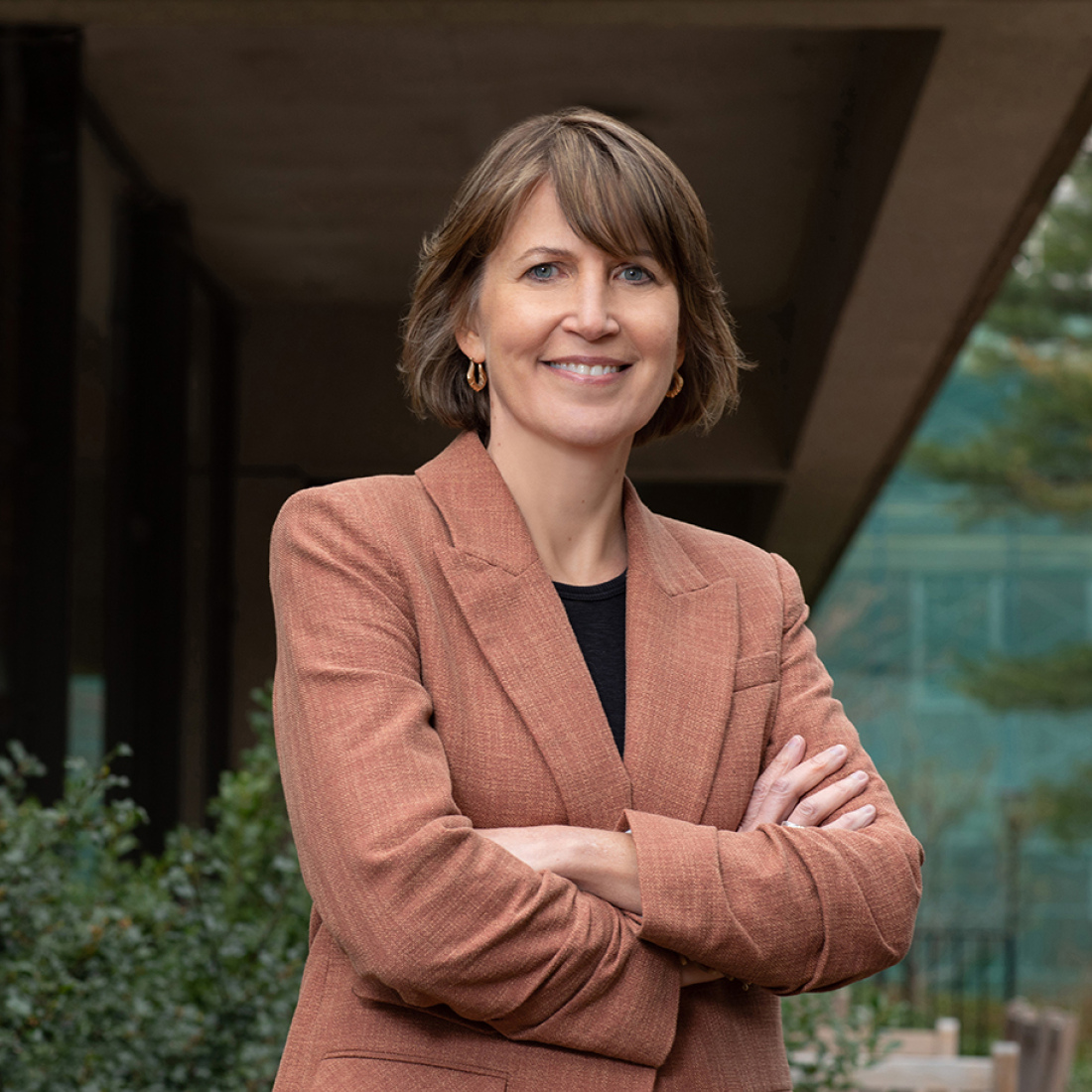
Elizabeth City
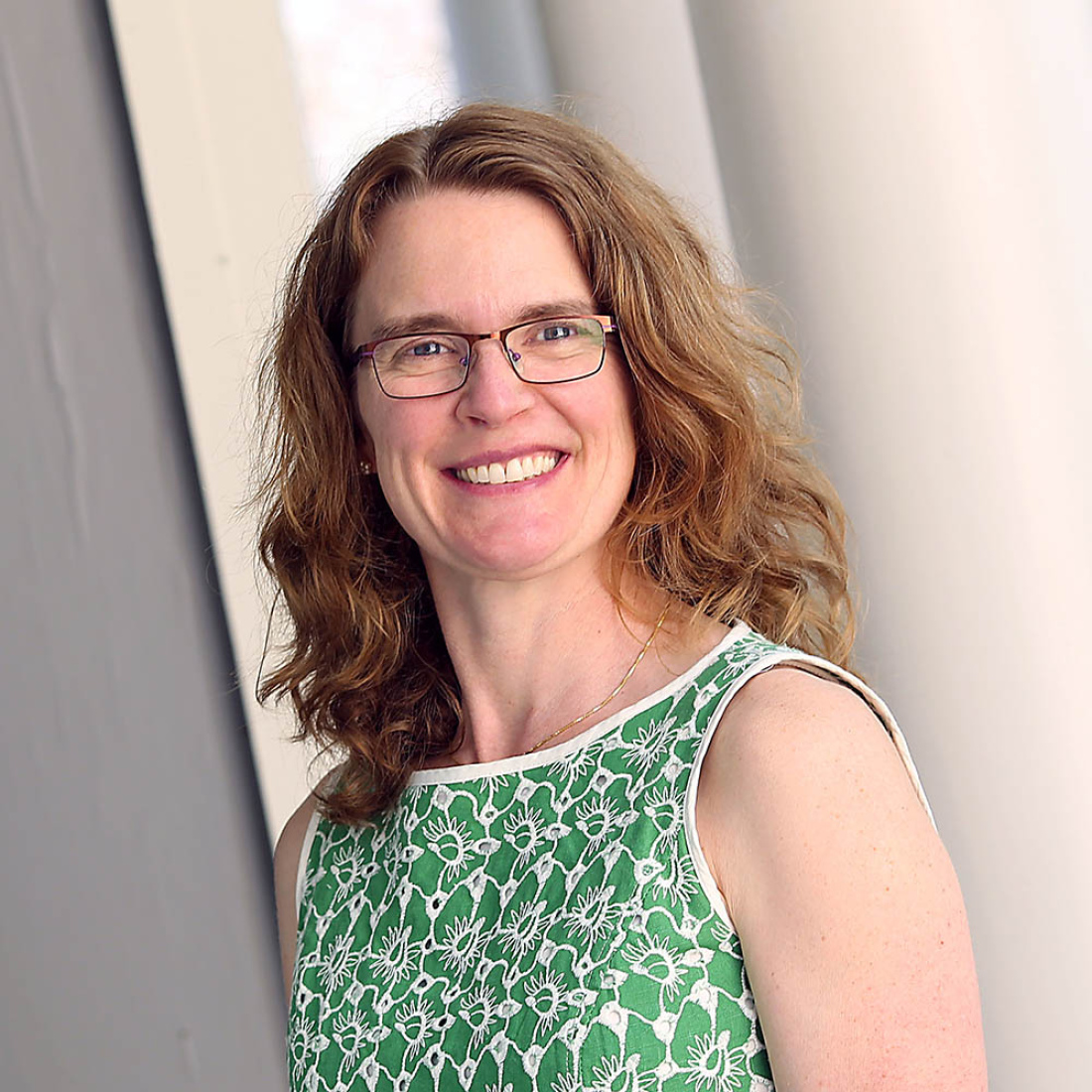
Candice Crawford-Zakian
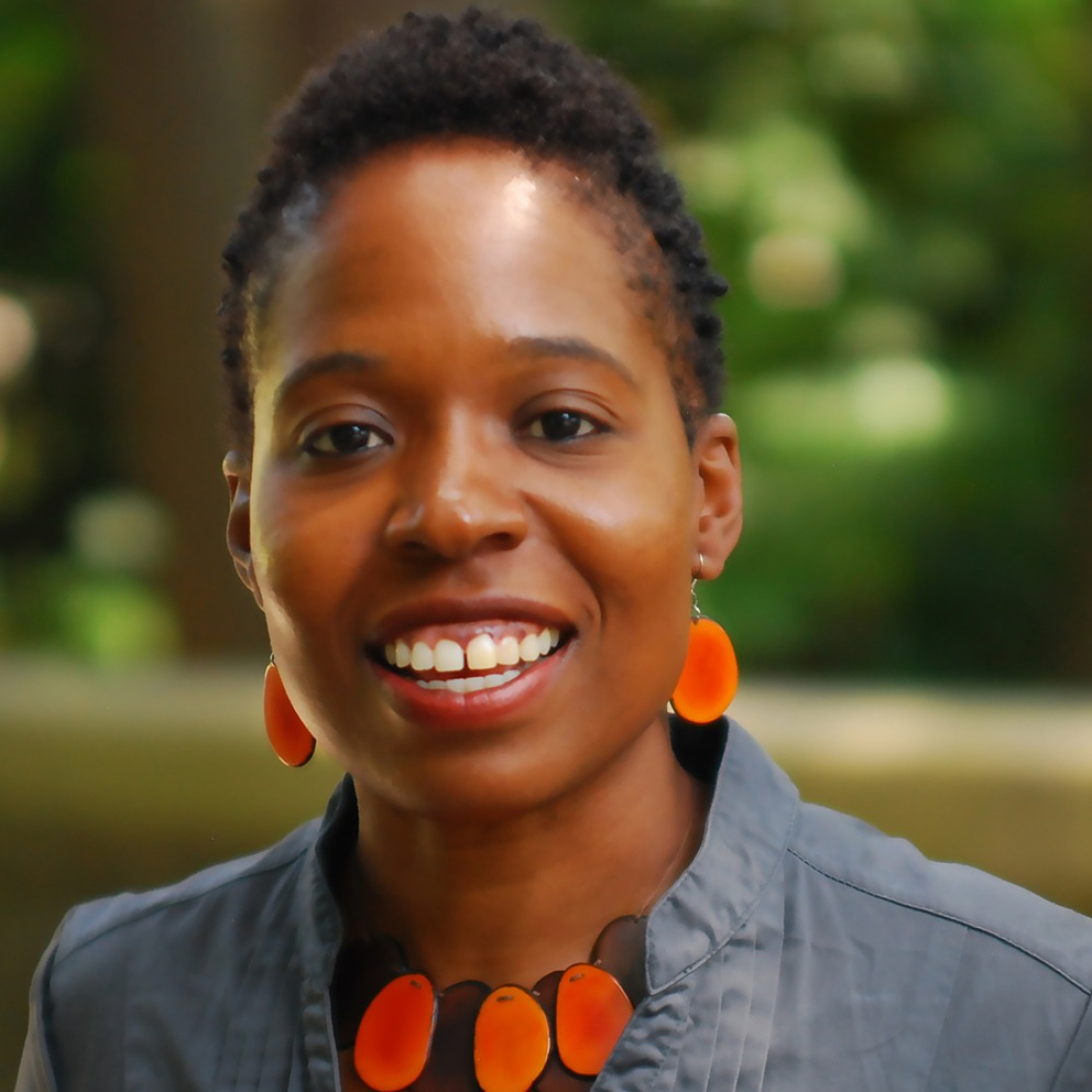
Marshall Ganz
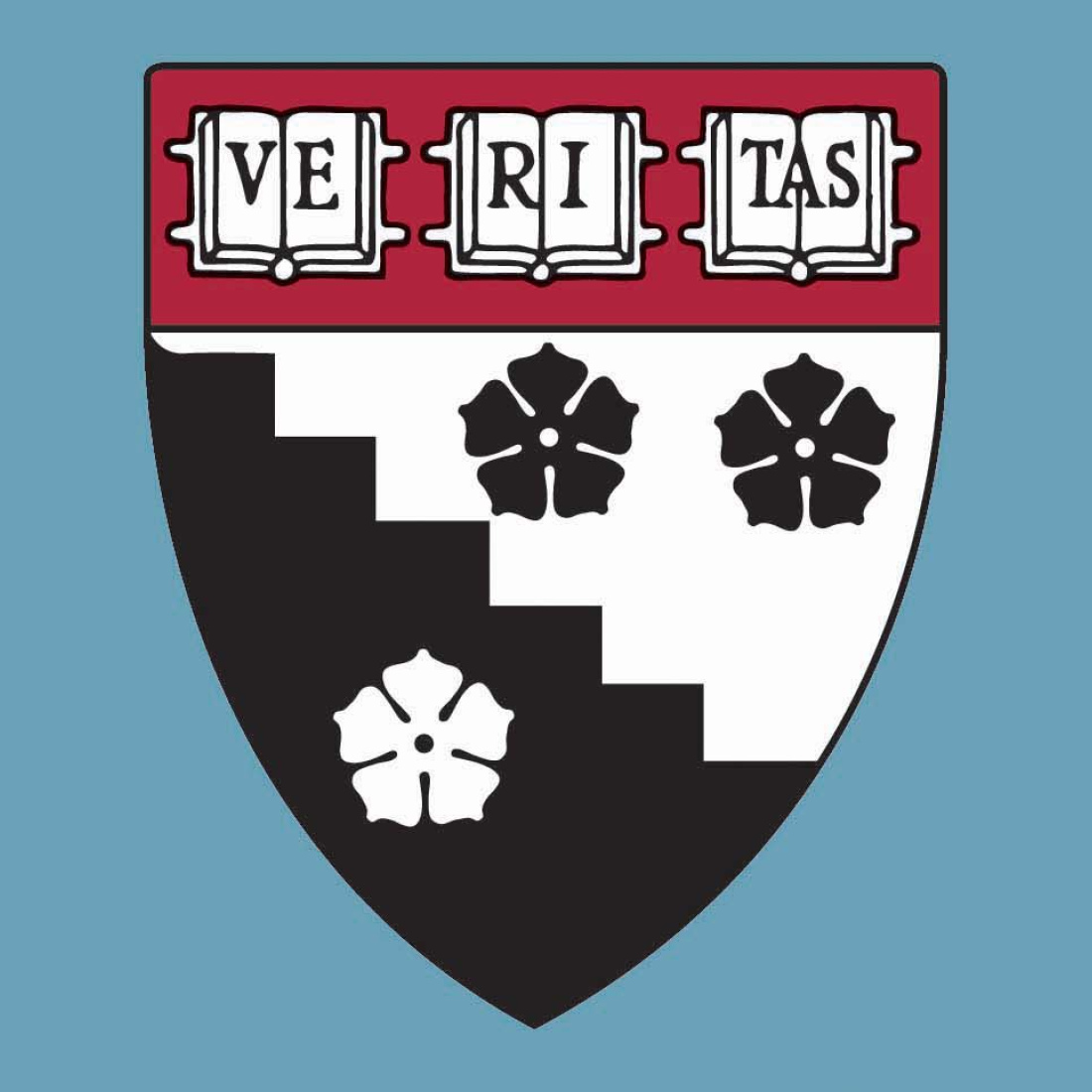
Adria D. Goodson
Deborah helsing.
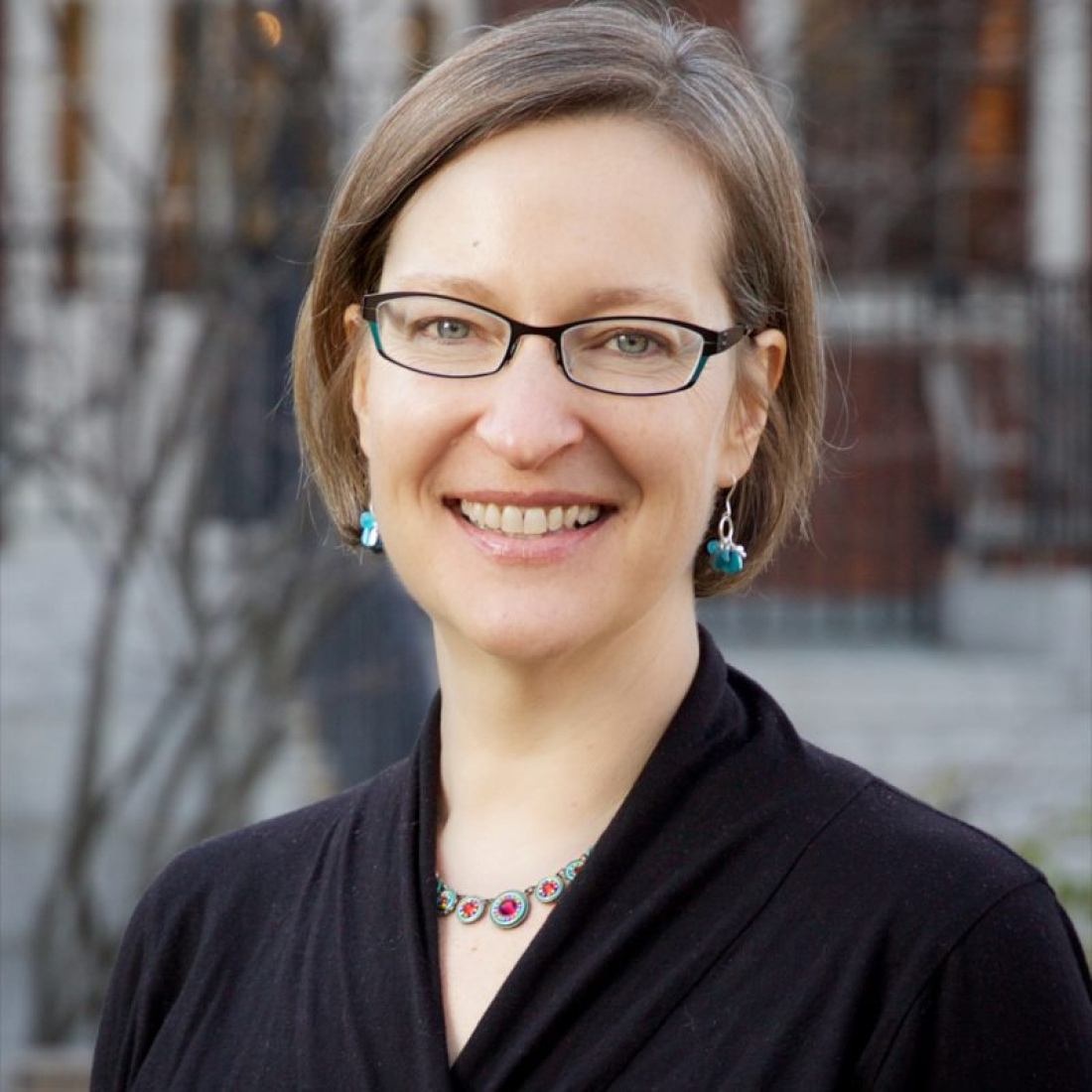
Monica C. Higgins
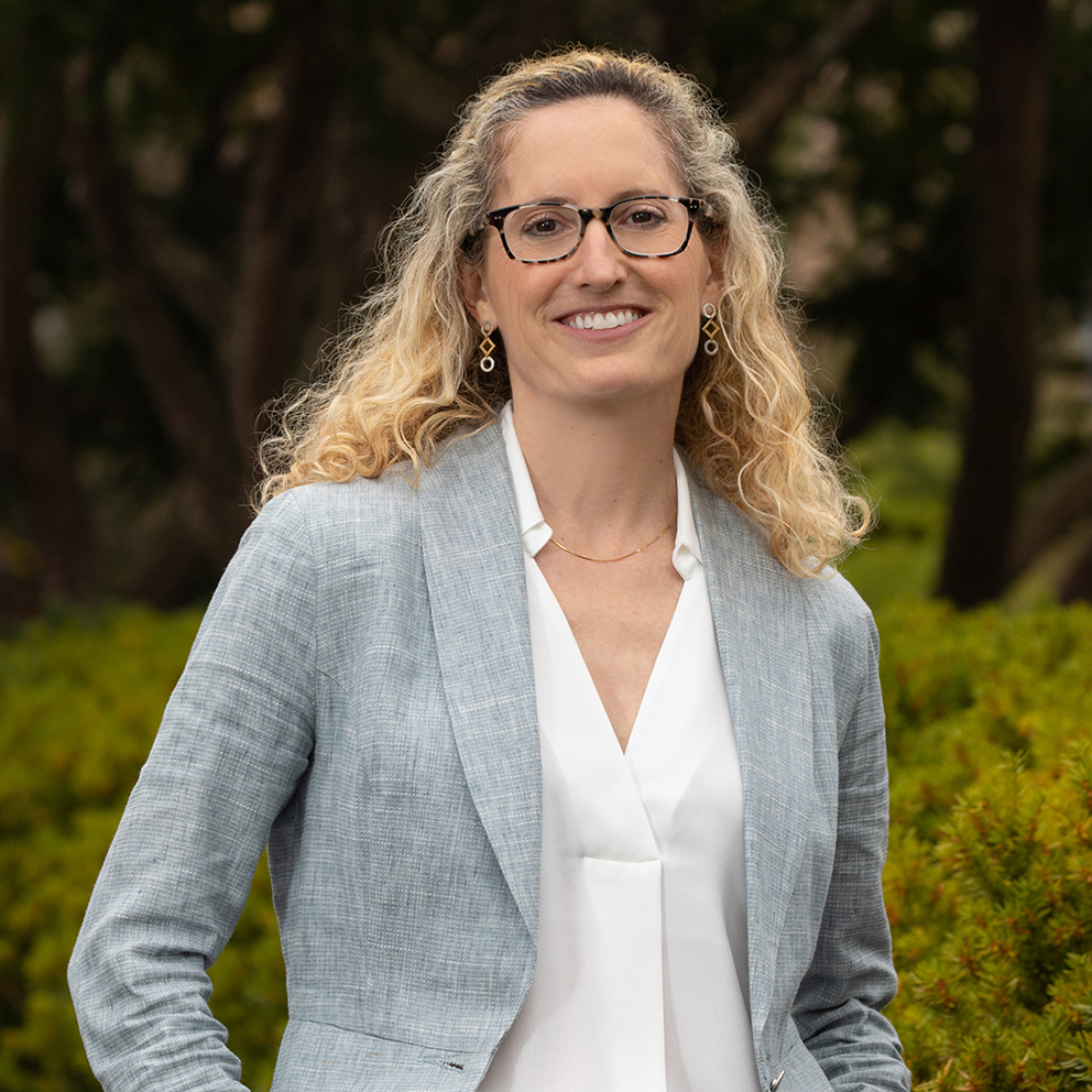
Deborah Jewell-Sherman
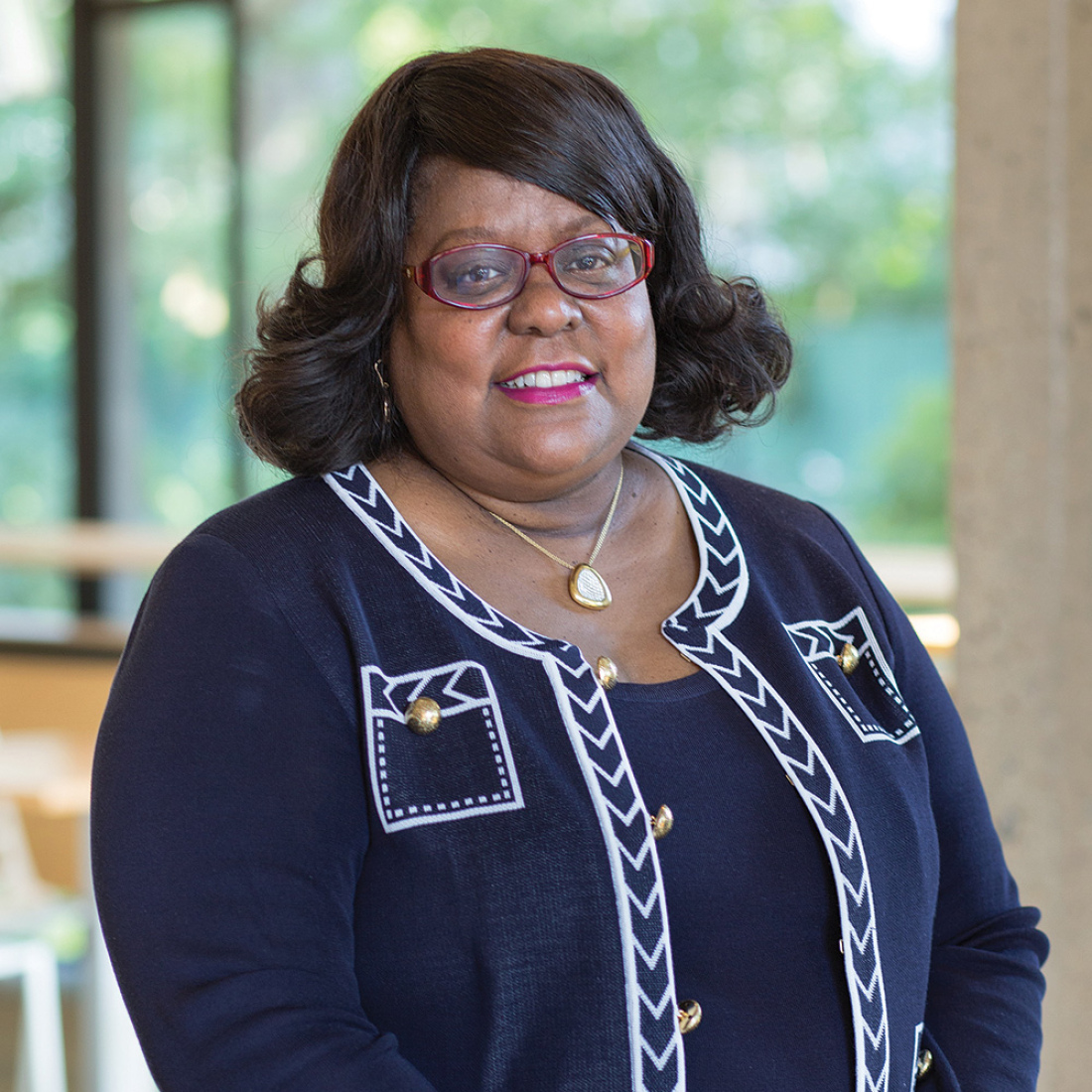
Lisa Laskow Lahey
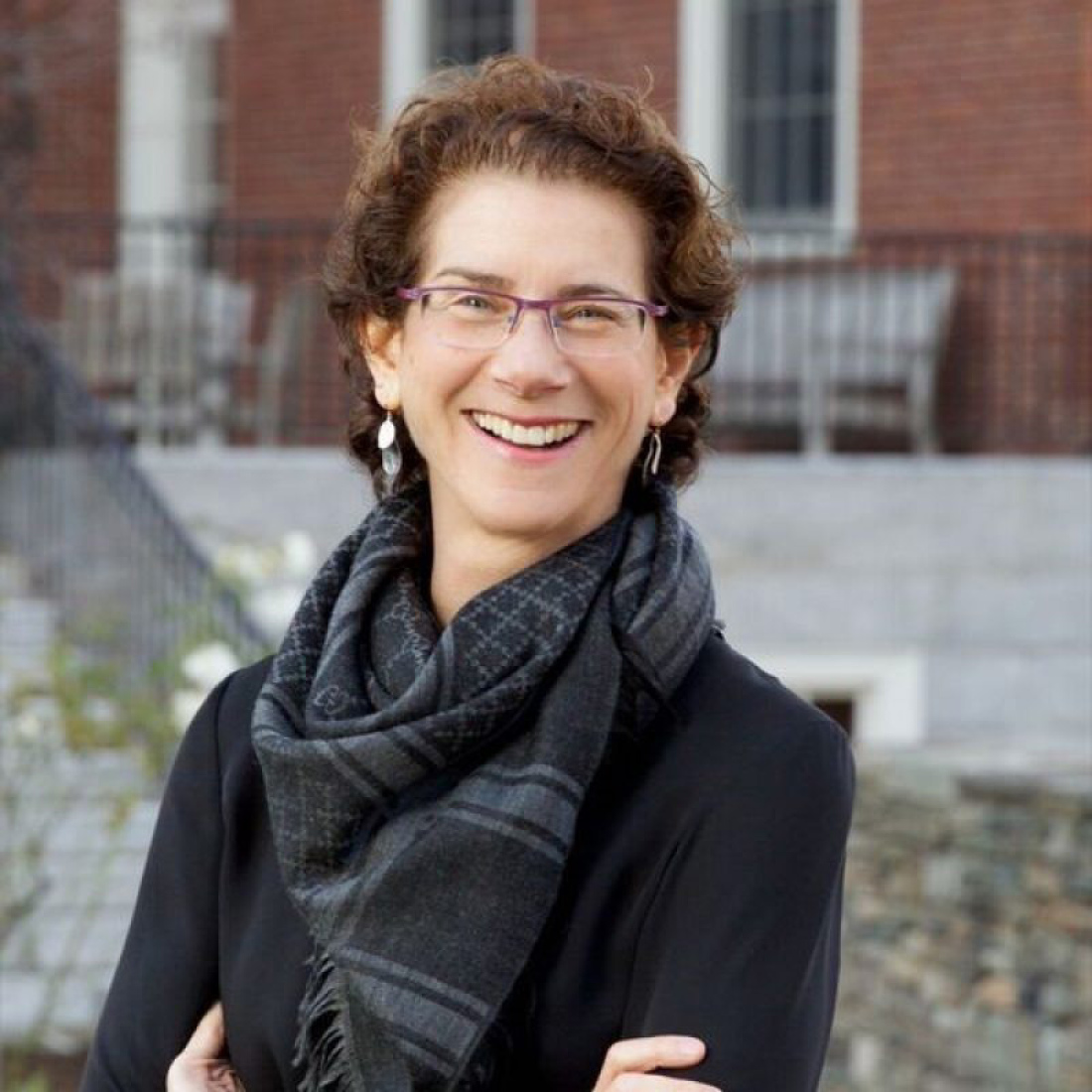
Mary Grassa O'Neill
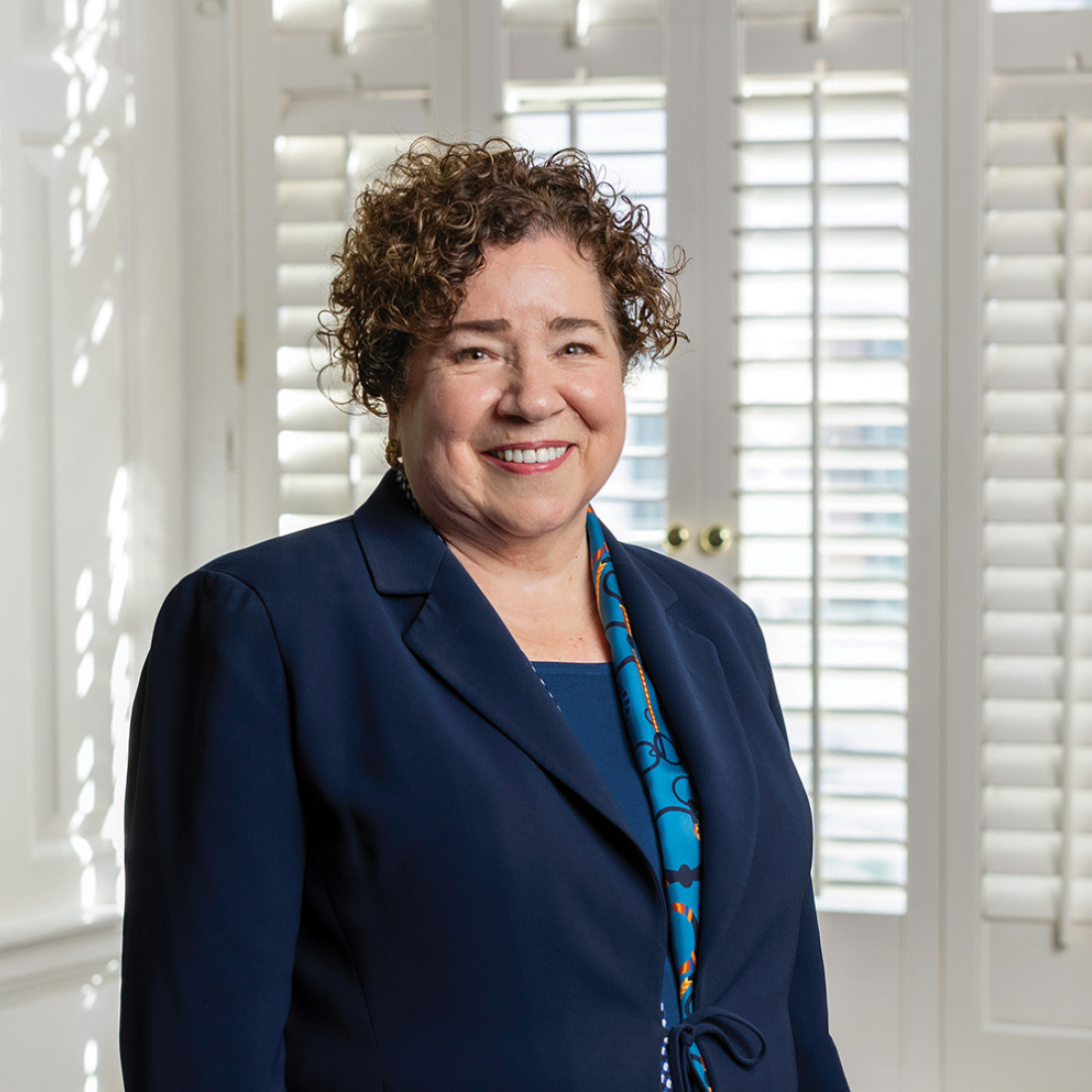
Irvin Leon Scott
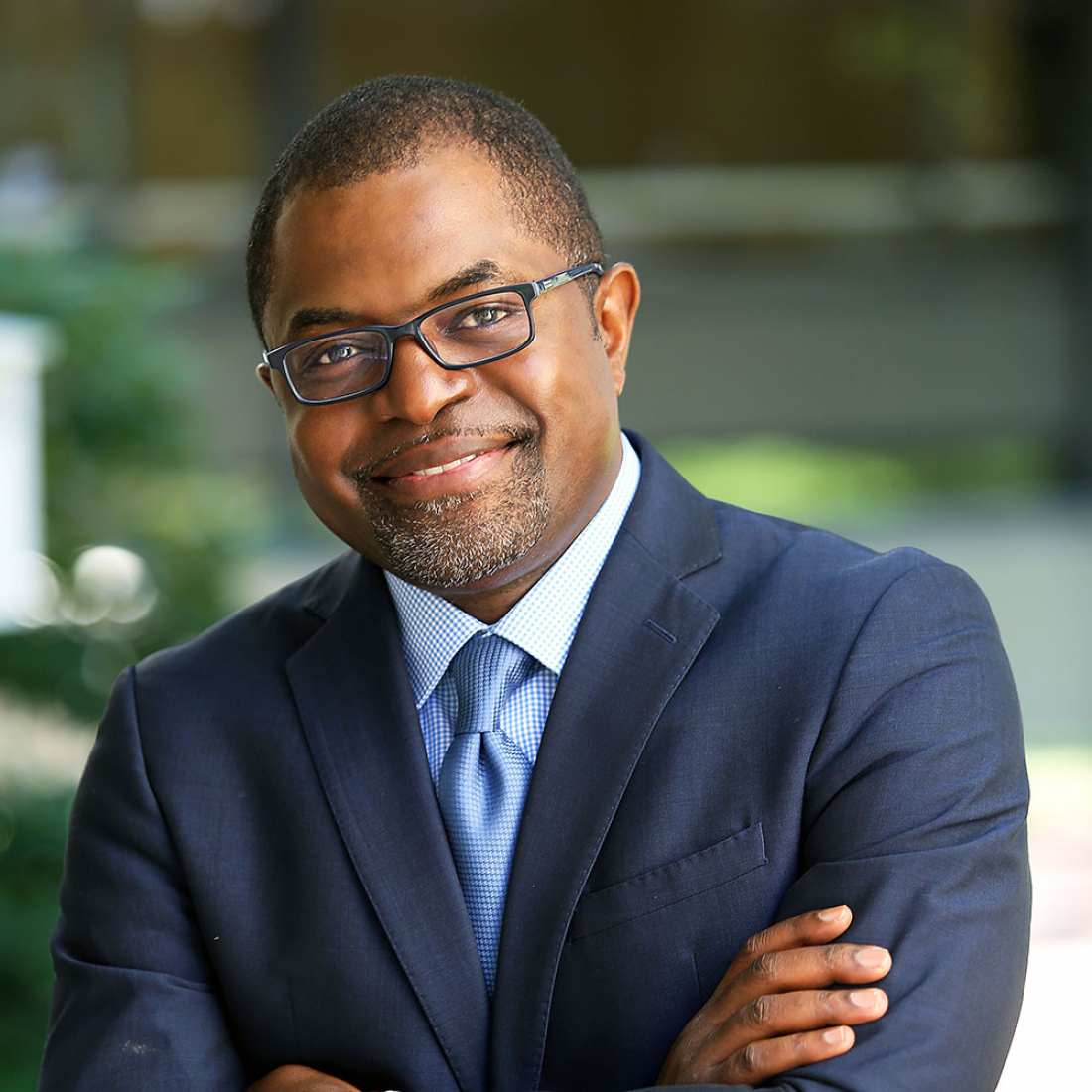
Catherine Snow
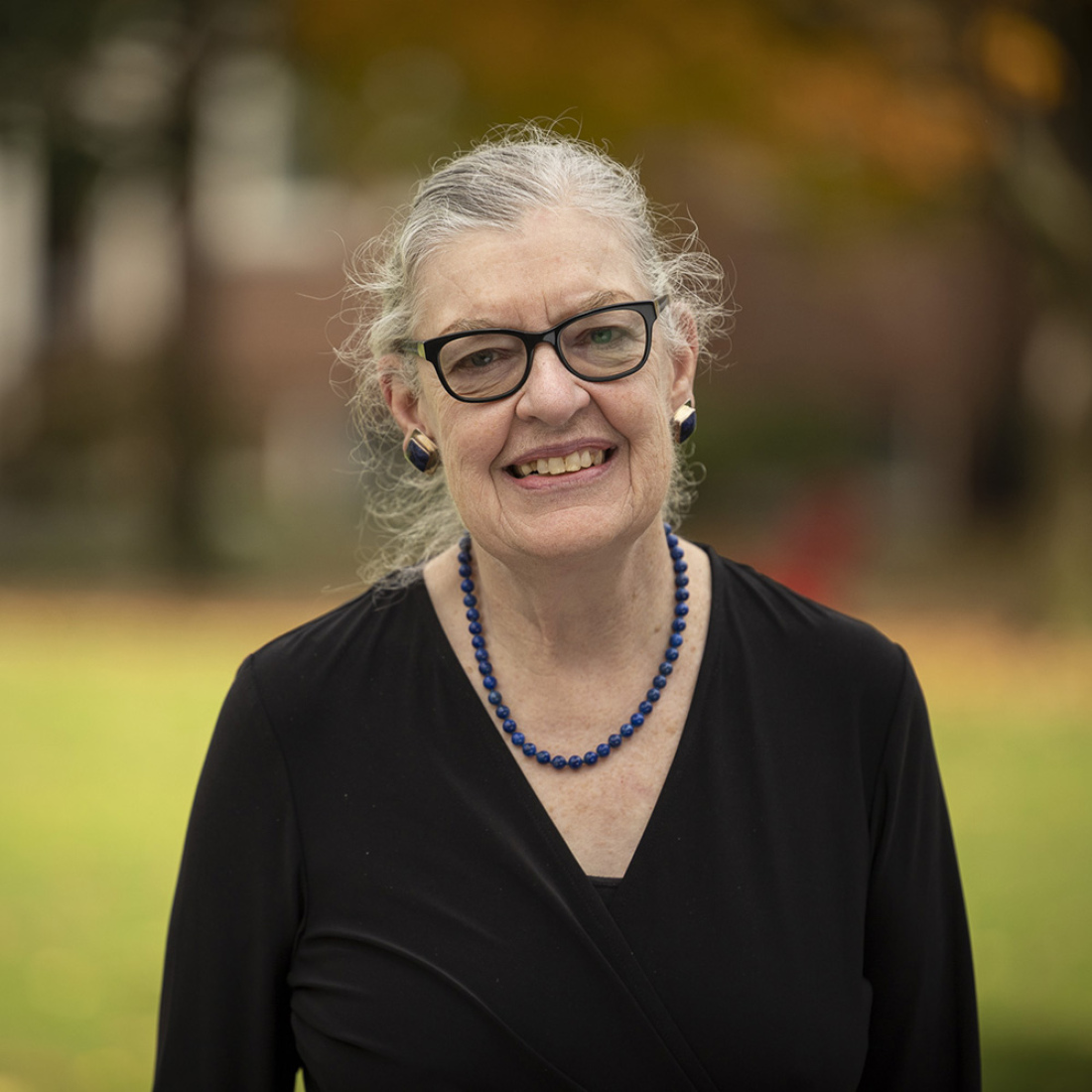
Michael L. Tushman
Martin west.
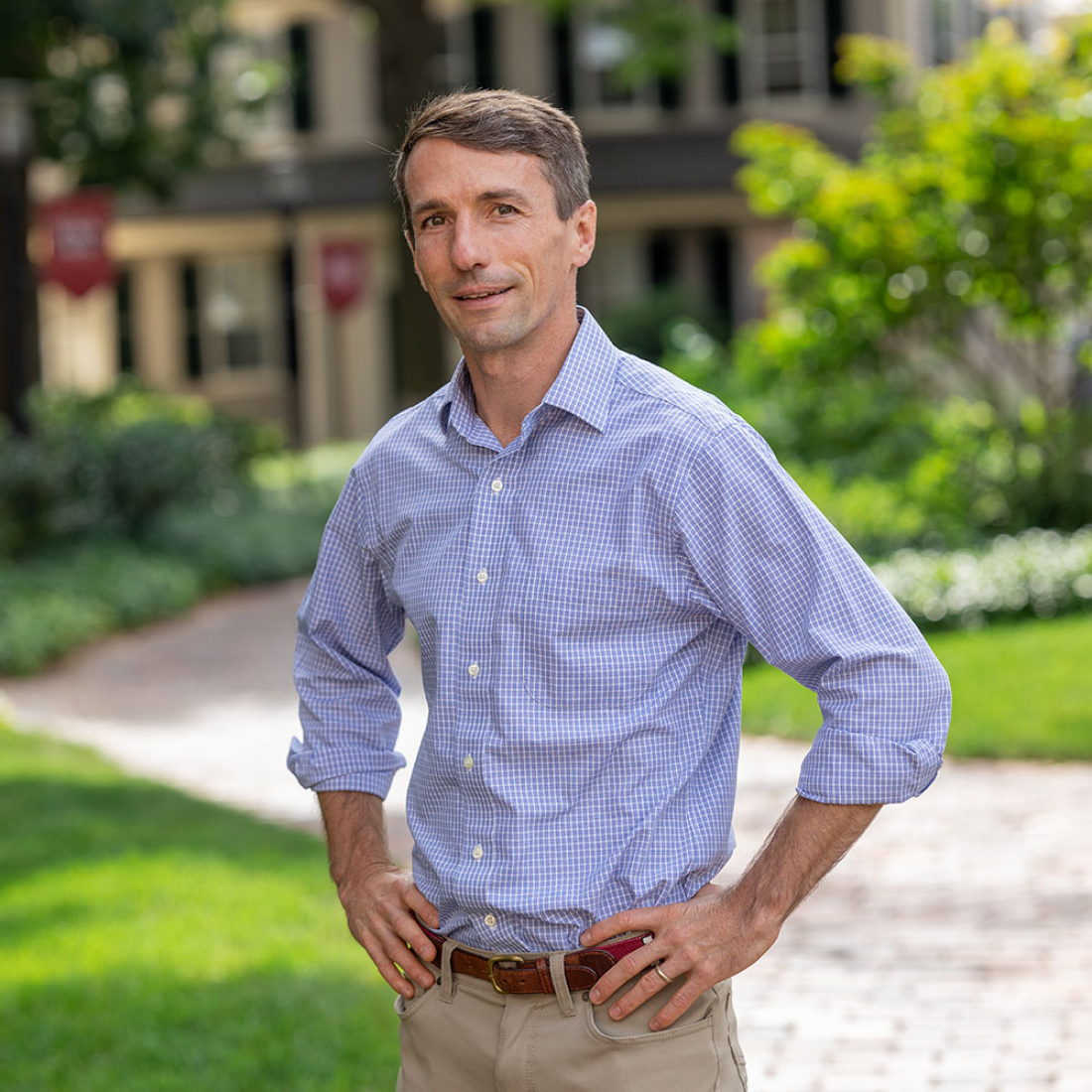
Introduce Yourself
Tell us about yourself so that we can tailor our communication to best fit your interests and provide you with relevant information about our programs, events, and other opportunities to connect with us.
Program Highlights
Explore examples of the Doctor of Education Leadership experience and the impact its community is making on the field:
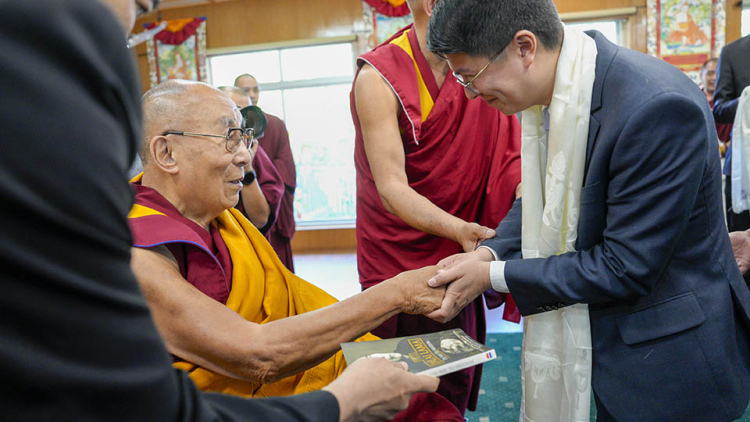
Do We Need Happiness Teachers?
After a trip to meet with the Dalai Lama, an Ed.L.D. student says we do
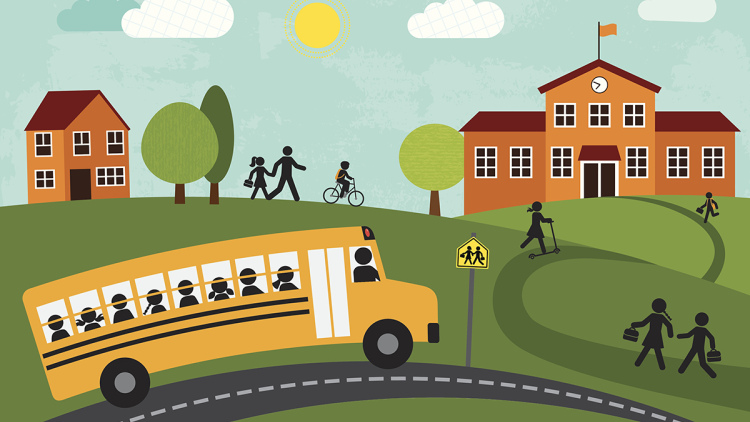
Combatting Chronic Absenteeism with Family Engagement
As post-COVID absenteeism rates continue unabated, a look at how strong family-school engagement can help

40 Facts About Elektrostal
Written by Lanette Mayes
Modified & Updated: 01 Jun 2024
Reviewed by Jessica Corbett

Elektrostal is a vibrant city located in the Moscow Oblast region of Russia. With a rich history, stunning architecture, and a thriving community, Elektrostal is a city that has much to offer. Whether you are a history buff, nature enthusiast, or simply curious about different cultures, Elektrostal is sure to captivate you.
This article will provide you with 40 fascinating facts about Elektrostal, giving you a better understanding of why this city is worth exploring. From its origins as an industrial hub to its modern-day charm, we will delve into the various aspects that make Elektrostal a unique and must-visit destination.
So, join us as we uncover the hidden treasures of Elektrostal and discover what makes this city a true gem in the heart of Russia.
Key Takeaways:
- Elektrostal, known as the “Motor City of Russia,” is a vibrant and growing city with a rich industrial history, offering diverse cultural experiences and a strong commitment to environmental sustainability.
- With its convenient location near Moscow, Elektrostal provides a picturesque landscape, vibrant nightlife, and a range of recreational activities, making it an ideal destination for residents and visitors alike.
Known as the “Motor City of Russia.”
Elektrostal, a city located in the Moscow Oblast region of Russia, earned the nickname “Motor City” due to its significant involvement in the automotive industry.
Home to the Elektrostal Metallurgical Plant.
Elektrostal is renowned for its metallurgical plant, which has been producing high-quality steel and alloys since its establishment in 1916.
Boasts a rich industrial heritage.
Elektrostal has a long history of industrial development, contributing to the growth and progress of the region.
Founded in 1916.
The city of Elektrostal was founded in 1916 as a result of the construction of the Elektrostal Metallurgical Plant.
Located approximately 50 kilometers east of Moscow.
Elektrostal is situated in close proximity to the Russian capital, making it easily accessible for both residents and visitors.
Known for its vibrant cultural scene.
Elektrostal is home to several cultural institutions, including museums, theaters, and art galleries that showcase the city’s rich artistic heritage.
A popular destination for nature lovers.
Surrounded by picturesque landscapes and forests, Elektrostal offers ample opportunities for outdoor activities such as hiking, camping, and birdwatching.
Hosts the annual Elektrostal City Day celebrations.
Every year, Elektrostal organizes festive events and activities to celebrate its founding, bringing together residents and visitors in a spirit of unity and joy.
Has a population of approximately 160,000 people.
Elektrostal is home to a diverse and vibrant community of around 160,000 residents, contributing to its dynamic atmosphere.
Boasts excellent education facilities.
The city is known for its well-established educational institutions, providing quality education to students of all ages.
A center for scientific research and innovation.
Elektrostal serves as an important hub for scientific research, particularly in the fields of metallurgy , materials science, and engineering.
Surrounded by picturesque lakes.
The city is blessed with numerous beautiful lakes , offering scenic views and recreational opportunities for locals and visitors alike.
Well-connected transportation system.
Elektrostal benefits from an efficient transportation network, including highways, railways, and public transportation options, ensuring convenient travel within and beyond the city.
Famous for its traditional Russian cuisine.
Food enthusiasts can indulge in authentic Russian dishes at numerous restaurants and cafes scattered throughout Elektrostal.
Home to notable architectural landmarks.
Elektrostal boasts impressive architecture, including the Church of the Transfiguration of the Lord and the Elektrostal Palace of Culture.
Offers a wide range of recreational facilities.
Residents and visitors can enjoy various recreational activities, such as sports complexes, swimming pools, and fitness centers, enhancing the overall quality of life.
Provides a high standard of healthcare.
Elektrostal is equipped with modern medical facilities, ensuring residents have access to quality healthcare services.
Home to the Elektrostal History Museum.
The Elektrostal History Museum showcases the city’s fascinating past through exhibitions and displays.
A hub for sports enthusiasts.
Elektrostal is passionate about sports, with numerous stadiums, arenas, and sports clubs offering opportunities for athletes and spectators.
Celebrates diverse cultural festivals.
Throughout the year, Elektrostal hosts a variety of cultural festivals, celebrating different ethnicities, traditions, and art forms.
Electric power played a significant role in its early development.
Elektrostal owes its name and initial growth to the establishment of electric power stations and the utilization of electricity in the industrial sector.
Boasts a thriving economy.
The city’s strong industrial base, coupled with its strategic location near Moscow, has contributed to Elektrostal’s prosperous economic status.
Houses the Elektrostal Drama Theater.
The Elektrostal Drama Theater is a cultural centerpiece, attracting theater enthusiasts from far and wide.
Popular destination for winter sports.
Elektrostal’s proximity to ski resorts and winter sport facilities makes it a favorite destination for skiing, snowboarding, and other winter activities.
Promotes environmental sustainability.
Elektrostal prioritizes environmental protection and sustainability, implementing initiatives to reduce pollution and preserve natural resources.
Home to renowned educational institutions.
Elektrostal is known for its prestigious schools and universities, offering a wide range of academic programs to students.
Committed to cultural preservation.
The city values its cultural heritage and takes active steps to preserve and promote traditional customs, crafts, and arts.
Hosts an annual International Film Festival.
The Elektrostal International Film Festival attracts filmmakers and cinema enthusiasts from around the world, showcasing a diverse range of films.
Encourages entrepreneurship and innovation.
Elektrostal supports aspiring entrepreneurs and fosters a culture of innovation, providing opportunities for startups and business development .
Offers a range of housing options.
Elektrostal provides diverse housing options, including apartments, houses, and residential complexes, catering to different lifestyles and budgets.
Home to notable sports teams.
Elektrostal is proud of its sports legacy , with several successful sports teams competing at regional and national levels.
Boasts a vibrant nightlife scene.
Residents and visitors can enjoy a lively nightlife in Elektrostal, with numerous bars, clubs, and entertainment venues.
Promotes cultural exchange and international relations.
Elektrostal actively engages in international partnerships, cultural exchanges, and diplomatic collaborations to foster global connections.
Surrounded by beautiful nature reserves.
Nearby nature reserves, such as the Barybino Forest and Luchinskoye Lake, offer opportunities for nature enthusiasts to explore and appreciate the region’s biodiversity.
Commemorates historical events.
The city pays tribute to significant historical events through memorials, monuments, and exhibitions, ensuring the preservation of collective memory.
Promotes sports and youth development.
Elektrostal invests in sports infrastructure and programs to encourage youth participation, health, and physical fitness.
Hosts annual cultural and artistic festivals.
Throughout the year, Elektrostal celebrates its cultural diversity through festivals dedicated to music, dance, art, and theater.
Provides a picturesque landscape for photography enthusiasts.
The city’s scenic beauty, architectural landmarks, and natural surroundings make it a paradise for photographers.
Connects to Moscow via a direct train line.
The convenient train connection between Elektrostal and Moscow makes commuting between the two cities effortless.
A city with a bright future.
Elektrostal continues to grow and develop, aiming to become a model city in terms of infrastructure, sustainability, and quality of life for its residents.
In conclusion, Elektrostal is a fascinating city with a rich history and a vibrant present. From its origins as a center of steel production to its modern-day status as a hub for education and industry, Elektrostal has plenty to offer both residents and visitors. With its beautiful parks, cultural attractions, and proximity to Moscow, there is no shortage of things to see and do in this dynamic city. Whether you’re interested in exploring its historical landmarks, enjoying outdoor activities, or immersing yourself in the local culture, Elektrostal has something for everyone. So, next time you find yourself in the Moscow region, don’t miss the opportunity to discover the hidden gems of Elektrostal.
Q: What is the population of Elektrostal?
A: As of the latest data, the population of Elektrostal is approximately XXXX.
Q: How far is Elektrostal from Moscow?
A: Elektrostal is located approximately XX kilometers away from Moscow.
Q: Are there any famous landmarks in Elektrostal?
A: Yes, Elektrostal is home to several notable landmarks, including XXXX and XXXX.
Q: What industries are prominent in Elektrostal?
A: Elektrostal is known for its steel production industry and is also a center for engineering and manufacturing.
Q: Are there any universities or educational institutions in Elektrostal?
A: Yes, Elektrostal is home to XXXX University and several other educational institutions.
Q: What are some popular outdoor activities in Elektrostal?
A: Elektrostal offers several outdoor activities, such as hiking, cycling, and picnicking in its beautiful parks.
Q: Is Elektrostal well-connected in terms of transportation?
A: Yes, Elektrostal has good transportation links, including trains and buses, making it easily accessible from nearby cities.
Q: Are there any annual events or festivals in Elektrostal?
A: Yes, Elektrostal hosts various events and festivals throughout the year, including XXXX and XXXX.
Elektrostal's fascinating history, vibrant culture, and promising future make it a city worth exploring. For more captivating facts about cities around the world, discover the unique characteristics that define each city . Uncover the hidden gems of Moscow Oblast through our in-depth look at Kolomna. Lastly, dive into the rich industrial heritage of Teesside, a thriving industrial center with its own story to tell.
Was this page helpful?
Our commitment to delivering trustworthy and engaging content is at the heart of what we do. Each fact on our site is contributed by real users like you, bringing a wealth of diverse insights and information. To ensure the highest standards of accuracy and reliability, our dedicated editors meticulously review each submission. This process guarantees that the facts we share are not only fascinating but also credible. Trust in our commitment to quality and authenticity as you explore and learn with us.
Share this Fact:
- Aesthetic Procedures
- Presidential Update
- Medical Professionals
- Industry Partners
- Sign up / Login
The Aesthetic Foundation Presidential Update May 2024

I am incredibly proud to be President of the rebranded, The Aesthetic Foundation! Like I said at the Business Meeting in Vancouver, Caroline Glicksman certainly set me up for success with all the progress of her year, and I know working with President-Elect, Pat McGuire, and the whole Foundation Board will lead to another year of growth and impact on our specialty. Thanks to the new website ( https://www.theaestheticfoundation.org /) I plan to focus on initiatives to create more widespread awareness and support for The Foundation and the work we do.

In speaking with colleagues around the country, it has become clear to me that many did not know what ASERF is or does. Changing the name to The Aesthetic Foundation and modernizing the website were the first steps in the process to change this.
Our new name well describes our involvement in Aesthetic Surgery/Medicine; however the membership should be aware that The Aesthetic Foundation frequently funds education and research on breast cancer and post-mastectomy reconstruction topics. Over the past few years, The Foundation has launched new programs and funds to server a wide breadth of our specialty and our patients:
RESEARCH GRANTS:
At the core of so much of what The Aesthetic Foundation does revolves around the funding of research. The Scientific Research Committee and Board will consider budget requests for projects of any amount. Much of the research funded results in publications in Aesthetic Society Journal . As you can see below, the list of topics covered is diverse and easy to search. More Info

EXTERNSHIP PROGRAM:
Helps make aesthetic education more accessible by providing medical students mentorship opportunities and increased exposure to aesthetic plastic surgery and research. Provides mentorship opportunities for Society members to shape the next generation. More Info
PATIENT ASSISTANCE FUNDS FOR BREAST CANCER PATIENTS:
Helps uninsured, under-insured, and financially strained breast cancer patients get the care they need and deserve. From diagnosis to breast reconstructive surgery and beyond. More Info
JAMES STUZIN AESTHETIC EDUCATION EXCELLENCE AWARD:
Provides financial assistance to residents, fellows, and graduates looking to pursue aesthetic educational opportunities beyond their training programs. More Info
RESIDENT TRAVEL SCHOLARSHIPS:
Makes aesthetic education more accessible by offering qualifying residents and fellows a $2,000 merit-based scholarship to offset travel costs associated with attending The Aesthetic Meeting. More Info
________________________________________________________________________________________________________________
This year, it's important for me to spread the word about digitally registering breast implants with our FDA-recognized app, Aesthetic One. This free resource makes implant registration easy and secure, allowing instant sharing of ID cards with patients and ensuring unmatched accuracy and reliability through ARISE, The American Registry for Breast Implant Surveillance.
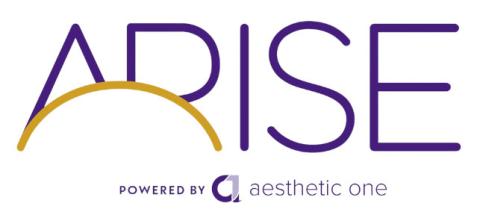
With faxing registrations soon to be phased out, now if the perfect time to make the switch to electronic registration for a safer, more informed future. You can sign-up today for this free resource or schedule a personal demo to see it in action. I look forward to the year ahead and continuing to champion The Foundation and the work we do!
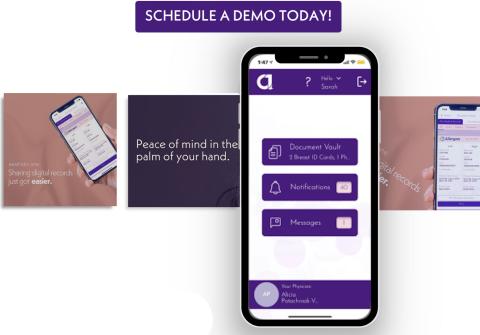
Sincerely,
Oni Garcia Jr., MD The Aesthetic Foundation President
Related Articles

It was with a great sense of honor and pride that I accepted my role as Presi

I am incredibly proud to be President of the rebranded, The Aesthetic Foundat
You can save your favorite Photos and Surgeons, track your Consultation Requests, and ask your own Questions.
By signing in or registering through one of the options below, you are accepting our Terms and Conditions .
Aesthetic Society Member ? Change or reset your password .
- Create an account
In The Know: News, updates from Greenville area businesses and nonprofits
Golf tournament raises funds for meyer center.
The Kids Classic Clarence Edwards Golf Tournament recently raised $809,006 for the nonprofit Meyer Center for Special Children.
The Meyer Center specializes in early education and intensive therapy to empower children with disabilities to reach their potential.
The record-breaking funds surpassed the tournament committee’s goals.
Participants played 27 holes at one of six premium courses, including lunch on the course, followed by an awards ceremony and dinner at Greenville Country Club. Golf courses were Cliffs at Keowee Falls, Cliffs Valley, Green Valley Country Club, Greenville Country Club Riverside, Smithfield’s Country Club, and the Walker Course at Clemson University.
The Title Sponsor was Mike Kaplan, Green Valley Country Club; Lead Sponsor, Tommy and Toni Jenkins, Greenville Maintenance Services; Presenting Sponsor: Tommy and Shounda Foster; and Course Sponsors, Lexus of Greenville and Billy Clinkscales.
The next Kids Classic Golf Tournament will take place May 6.
Old Europe Desserts Opens At BridgeWay
Old Europe Desserts has opened at BridgeWay Station at 2107 Via Corso Ave.
The menu at Old Europe Desserts BridgeWay will feature 18 to 24 desserts, along with seasonal specialties, macarons, coffee, wine, breakfast, catering services, a grab-and-go lunch menu, and vegan and gluten-free options.
Hours will be 8 a.m. to 9 p.m. Monday through Wednesday; 8 a.m. to 10 p.m. Thursday; 8 a.m. to midnight Friday and Saturday; and 8 a.m. to 10 p.m. Sunday.
Retail tenants open at BridgeWay Station are Jeremiah’s Italian Ice, Cocobowlz, City Market at BridgeWay Station, BridgeWay Brewing Co., Le Chic Nails Lounge, The Junkyard, Plum: A Lifestyle Boutique, and The Worx at BridgeWay Station.
Phil Hughes, owner and President of Hughes Investments, developed BridgeWay Station. Hughes Investments Inc., founded in 1991, develops office, retail, industrial, multifamily, medical, and mixed-use properties.
TD Foundation Awards Grant To Pendleton Place
The TD Charitable Foundation has awarded $175,000 in grants to Pendleton Place as part of its 2024 Housing for Everyone program.
The foundation is awarding $7 million to 27 nonprofits across the bank’s Maine-to-Florida and Michigan footprint.
The grants to Pendleton Place will support a program called Empowerment through Housing: Building a Sustainable Future for Marginalized Youth. Pendleton Place is an emergency homeless shelter for youths ages 12 to 21 and offers programs to support them.
TD Charitable Foundation, the charitable giving arm of TD Bank, awarded grants ranging from $150,000 to $250,000 to support independent living for marginalized individuals, especially those who experience homelessness and conditions that make it difficult to maintain a stable home.
This is the 18th annual Housing for Everyone program.
The grant recipients promote stable, independent living with short-term housing assistance, permanent supportive housing, or transitional housing.
The organizations help the “most vulnerable members of our community, those who are unsheltered or experiencing homelessness due to higher eviction rates as pandemic-era programs have ended or financial insecurity grows,” said Paige Carlson-Heim, Director of the TD Charitable Foundation.
Grant recipients work closely with TD to create innovative solutions, she said.
TD recently hosted its first TD Housing Summit, aimed at addressing the critical need for affordable housing solutions in the United States. On the campus of Howard University, the summit was an assembly of housing organizations, academics, and public and private sector leaders.
Since 2005, the Housing for Everyone program has awarded more than $49 million to support 550 affordable housing initiatives.
TD Bank has more than 1,100 locations. Since its inception in 2002, the foundation has donated over $323 million to nonprofits organizations.
Simpsonville Springs Into Art
The Simpsonville Arts Foundation will present Spring into Art from 10 a.m. to 4 p.m. June 15 on Hedge Street, behind City Hall. The event will feature local artists, vendors, and opportunities for face painting, chalk art and other activities for children.
Bridge City Coffee Opens In Spartanburg
Bridge City Coffee is opening its fourth location, a café in partnership with Family Med and Parkside Pediatrics in Spartanburg.
The grand opening will be June 5. The location will offer an AeroPress manual brew option for the first time.
Hours are 7:30 a.m. to 3 p.m. Monday through Thursday. The store will be closed Saturday and Sunday. The café is located at 2430 Reidville Road. Other locations are at 1520 Wade Hampton Blvd. and 200 West Washington St., both in Greenville, and at 164D S. Main St. in Travelers Rest.
Cliffs Names Director Of Sales
The Cliffs has hired Richard Seay as Director of Sales at Cliffs Realty.
Seay has spent 30 years in the luxury real estate industry across the United States and the Caribbean.
“We are looking forward to Richard’s stewardship of real estate operations. Our communities are entering a phase of considerable growth, and his comprehensive experience will be integral to our success,” said Rob Duckett, President of Operations for South Street Partners.
A Greenville native, Seay will manage the Cliffs Realty sales teams in six private luxury communities in South Carolina and the firm’s newest brokerage office in the Asheville region, The Cliffs at Walnut Cove.
Before arriving at The Cliffs, Seay was Vice President and Director of Sales at luxury resort communities in Park City, Utah, and the Pacific Northwest where he oversaw record-breaking numbers of transactions and a 60% increase in the average price of lots.
Previously, he founded a consulting firm that specialized in real estate sales and marketing on the island of St. Maarten.
In the first quarter of this year, sales closed on 63 properties across the seven communities at The Cliffs. Sales totaled $39.4 million from all brokerages operating within the communities' gates. Cliffs Realty, the official brokerage of The Cliffs, sold 35 properties for a total of $26.7 million. It has an additional 35 sales pending.
Transactions included the sale of 46 home sites, and 292 homes are under construction.
Cliffs Builders, the homebuilding company of The Cliffs, is offering 11 new homesites and three home plans in Cove Park at Walnut Cove.
Amenities at Cliffs properties include seven clubhouses, seven golf courses, seven wellness centers, multiple tennis and pickleball complexes, a marina, beach club, and equestrian center, more than a dozen restaurants and event venues, and over 2,000 year-round programs and social activities.
Bon Secours Celebrates Project SEARCH Graduates
Bon Secours St. Francis Health System recently celebrated the graduation of its Project SEARCH interns.
Each year, the hospital hosts a group of students with disabilities from Greenville County high schools and provides them with work experience through internship rotations in the hospital. The goal is to help them prepare for and find fulfilling and productive jobs after high school.
With Greenville County Schools and South Carolina Vocational Rehabilitation, the Project SEARCH program at Bon Secours St. Francis provides hands-on training and school-required academics. Eleven interns graduated this year.
Interns develop “transferable skills that improve self-confidence, instill a sense of pride and lead to independence,” said Allison Fleahman, Bon Secours St. Francis Workforce Coordinator.
The program takes place in the Joseph J. Pazdan Project SEARCH Center – which has interactive space for classwork and training rooms designed to reflect patient care areas, where interns can practice their skills.
Since its debut in 2017, 86% of the Project SEARCH interns in Greenville have found employment after graduation. That includes 19 interns who were hired by the health system.
For information about Project SEARCH, go to bonsecours.com .
Mast General Store Celebrates Land Trust Day
The Mast General Store in Greenville supported the work of Upstate Forever by donating 20% of the day’s sales on June 1, Land Trust Day and also National Trails Day.
Upstate Forever is the land trust serving Greenville and nearby areas.
National Trails Day celebrates trails and the organizations and people who develop and maintain them. Many trails are created through land trusts, which are nonprofit organizations that work with landowners and other associations to provide recreational opportunities and to safeguard open spaces, wetlands, and wildlife habitats.
This is the 20th year that Mast Store has celebrated Land Trust Day with a donation of sales.
John Cooper is Chairman of the Board of the Mast Store. Every Mast Store community has an active land conservation group.
Since 1998, the mission of Upstate Forever has been to maintain critical natural lands and waters in the Upstate. The group has played a key role in securing and opening the Swamp Rabbit Trail and has protected 28,000 acres on 140 properties.

IMAGES
VIDEO
COMMENTS
These medical student-led projects make an impact during pandemic. Feb 24, 2021 . 5 MIN READ. By. Brendan Murphy , Senior News Writer. Print Page. The COVID-19 pandemic caused unprecedented strain on health systems, and an unwelcomed disruption to medical training. Still, even as they were sidelined from patient interaction, medical students ...
The 1910 Flexner Report, officially titled "Medical Education in the United States and Canada," was a landmark document that brought about medical education reform in North America. Abraham Flexner, a research scholar at the Carnegie Foundation, visited all 155 medical schools in operation at the time to assess the state of medical education.
By ROBERT McDONALD May 12, 2021 Education. With the world demanding innovative and forward-thinking approaches to medical education, Harvard Medical School is using its convening power to bring advancements in medical education to the worldwide education community. In fall 2019, a group of senior leaders from international medical schools ...
Here are some examples: Project Title: Optimizing the Delivery of diabetes Management During Breast Cancer Care: Provider PerspectivesProject Aim: Identify provider perspectives on barriers to providing diabetes care for women with Breast cancer and prioritize possible intervention strategies. Discussion groups conducted with primary care ...
Make the AAMC your medical education home. Explore what we have to offer, from learning events, trainings, and professional development conferences to programs, initiatives, and scholarship on key and emerging topics. Get involved, advance your career, and help move the field of medical education forward.
About the Program. Project Medical Education (PME) helps medical schools and teaching hospitals educate Congress and their staff, state and local officials, community members, potential and current donors, and others outside of academic medicine about the process of medical education, the benefits it provides, its complex funding mechanisms, and the essential role of government in providing ...
The Program for Medical Education Innovations and Research (PrMEIR), part of NYU Langone's Division of General Internal Medicine and Clinical Innovation, is dedicated to advancing medical education scholarship and developing best practices for patient-centered, evidence-based medical education. Our research initiatives strengthen the links ...
We're introducing the Medical Licensing Assessment (MLA) which will test the core knowledge, skills and behaviours needed to practise safely in the UK. From 2023, international medical students will sit the MLA instead of PLAB. And UK medical students graduating in the academic year 2023-24 will need to pass the MLA. Medicine never stops ...
In all, 43 medical students showcased projects they conducted at the University at Buffalo, its partner health care agencies and institutions throughout the nation. ... 4/10/24 Office of Graduate Medical Education; 3/21/24 Offices of Medical Education; 9/23/20 Room requests; 5/16/24 Tech support (OMC) Site Tools . Post an event to the calendar ...
Education and training of medical students and doctors on these new technologies and concepts is crucial. The time allotted for diabetes training in many medical curricula has remained constant as ...
Introduction: The growth of medical schools, faculty attrition, and reports of student disinterest in academia all stress the need to cultivate the next generation of academic physicians. Because medical educators serve as the largest segment of faculty, heightening diverse students' awareness of opportunities to engage in various educational roles and scholarship may help them consider ...
International Emergency Medicine (iEM) Education Project is an international, non-profit project, endorsed by International Federation for Emergency Medicine (IFEM) and supported by emergency medicine professionals from all around the world. It aims to promote emergency medicine and provide free, reusable educational content for undergraduate medical trainees and educators.
International Emergency Medicine Education Project's book is "iEM for Medical Students/Interns" and consist of 130 chapters written by 127 international contributors. Emergency physicians, residents, interns and the medical students showed amazing interest and worked hard to make this resource available today. This project is an extraordinary collaborative work with all stakeholders. Everday ...
The AAMC leads and supports initiatives and projects to improve undergraduate, graduate, and continuing medical education. Competency-based Medical Education CBME is an outcomes-based approach to the design, implementation, and evaluation of education programs and the assessment of learners, using competencies or observable abilities.
In this project, we developed an interprofessional longitudinal clinical reasoning curriculum for students in healthcare education and a train-the-trainer course for health profession educators. The current curriculum (for a description of the curriculum, see Hege et al. ) was also informed by this study. This study was part of the Erasmus ...
Project Wonder. Project Wonder: the Art of Science at the Medical College of Wisconsin partners basic and translational scientists with local artists and writers to elevate and amplify their innovative, life-changing research. Translational Research. Translational scientists turn science and research into improved treatments. Centers
Improved metabolic rate. Strength-training exercise can help your body gain more lean muscle mass. And muscle helps keep your body and heart healthy by improving your metabolic rate. In other ...
The HMS scholarly project requirement is designed to provide every Harvard medical student with an opportunity to pursue a mentored scholarly experience analyzing a medical or health-related question, issue or problem in depth. ... Harvard Medical School Tosteson Medical Education Center, Suite 347 260 Longwood Avenue Boston, MA 02115 Phone ...
The Ed.L.D Program — taught by faculty from the Harvard Graduate School of Education, the Harvard Business School, and the Harvard Kennedy School — will train you for system-level leadership positions in school systems, state and federal departments of education, and national nonprofit organizations. Ed.L.D. is a full-time, three-year ...
Education: List the most recent institution first—your medical school—with the name of the institution, degree received and dates. You will then follow it with any graduate and undergraduate schooling. Academics: This should include honors and awards and course performance.
In 1938, it was granted town status. [citation needed]Administrative and municipal status. Within the framework of administrative divisions, it is incorporated as Elektrostal City Under Oblast Jurisdiction—an administrative unit with the status equal to that of the districts. As a municipal division, Elektrostal City Under Oblast Jurisdiction is incorporated as Elektrostal Urban Okrug.
The Research-Based Project Medical Education (PME) event is based on the successful PME model of education through interactive sessions and hands-on learning, and is meant to showcase information related to basic, clinical, community and population, and translational research, and the supporting funding mechanisms.. The research-based PME can be set up in one of three ways:
We are the Global Health and Education Projects, Incorporated-GHEP! We are a fully registered 501 (c) (3) non-profit organization located a few minutes away from Washington, DC., U.S.A. Our mission is to eliminate health disparities by addressing the non-medical factors that influence health outcomes, which are known as the Social ...
Residents and visitors can enjoy various recreational activities, such as sports complexes, swimming pools, and fitness centers, enhancing the overall quality of life. Provides a high standard of healthcare. Elektrostal is equipped with modern medical facilities, ensuring residents have access to quality healthcare services.
Animals and Pets Anime Art Cars and Motor Vehicles Crafts and DIY Culture, Race, and Ethnicity Ethics and Philosophy Fashion Food and Drink History Hobbies Law Learning and Education Military Movies Music Place Podcasts and Streamers Politics Programming Reading, Writing, and Literature Religion and Spirituality Science Tabletop Games ...
The Scientific Research Committee and Board will consider budget requests for projects of any amount. Much of the research funded results in publications in Aesthetic Society Journal. ... Helps make aesthetic education more accessible by providing medical students mentorship opportunities and increased exposure to aesthetic plastic surgery and ...
Project Medical Education (PME) is a hands-on, interactive learning program intended to inform policymakers and their staffs, community leaders, donors, and others about the process of becoming a doctor, the three missions and work of medical schools and teaching hospitals,
Hours are 7:30 a.m. to 3 p.m. Monday through Thursday. The store will be closed Saturday and Sunday. The café is located at 2430 Reidville Road. Other locations are at 1520 Wade Hampton Blvd ...